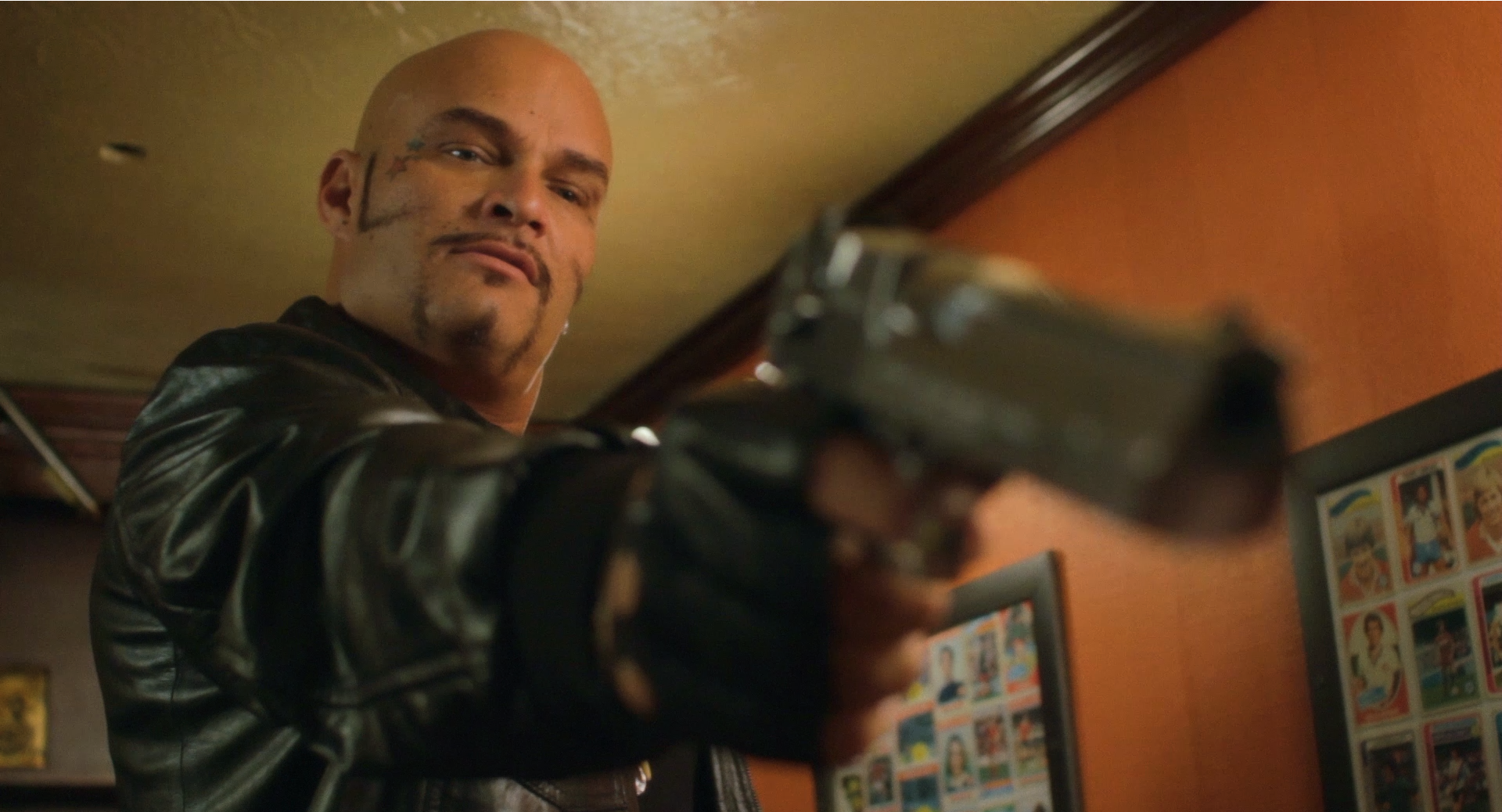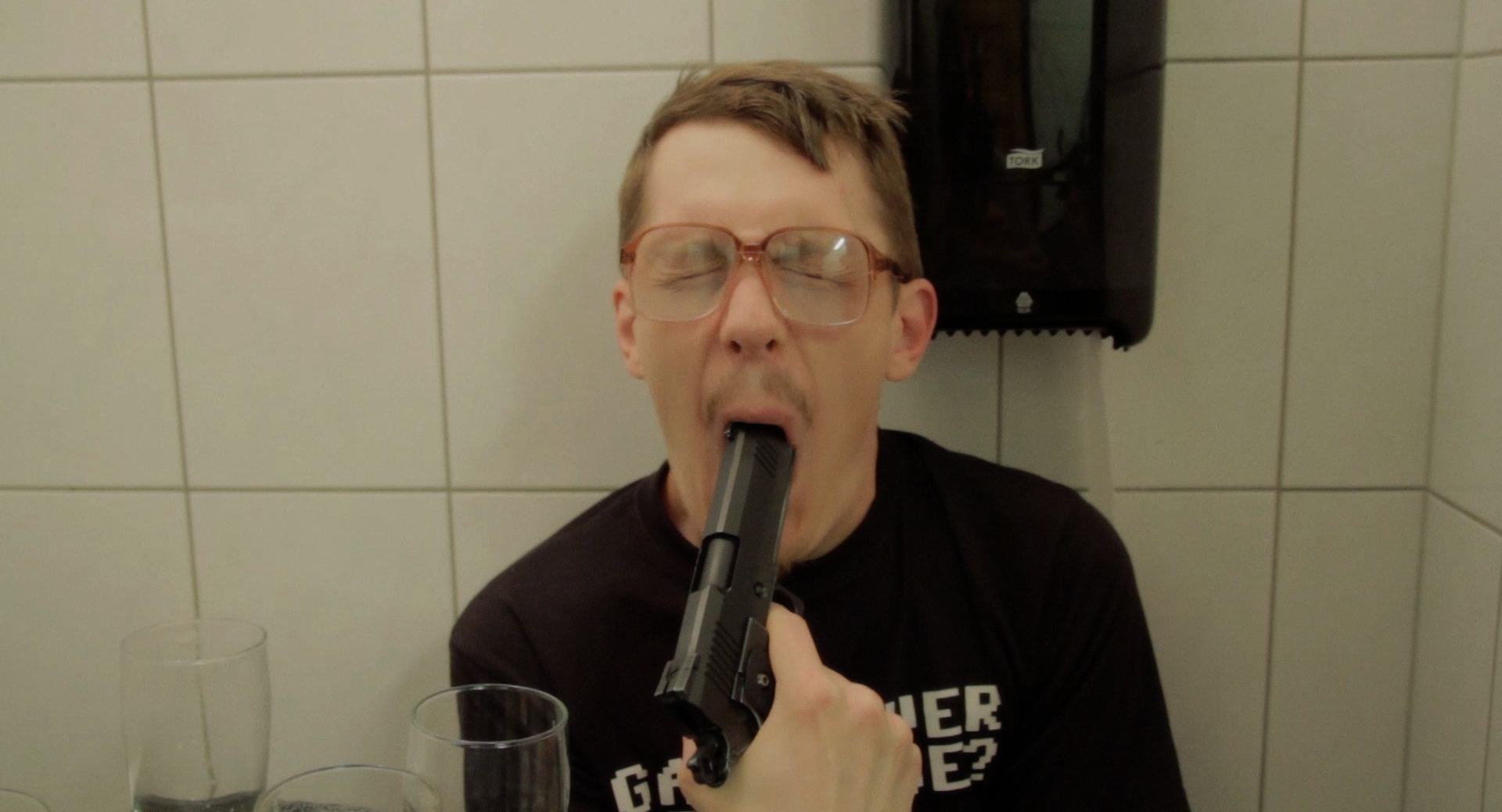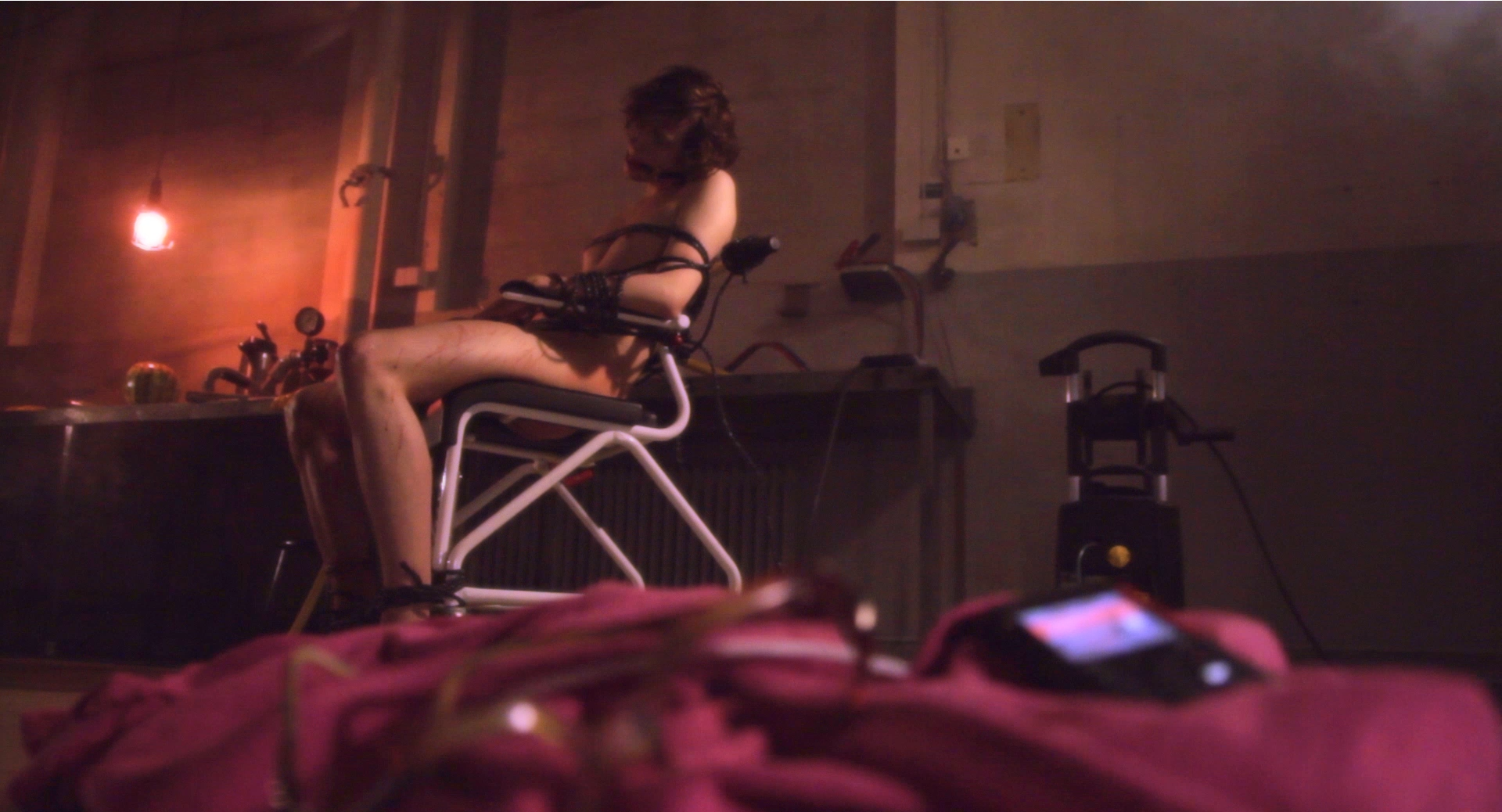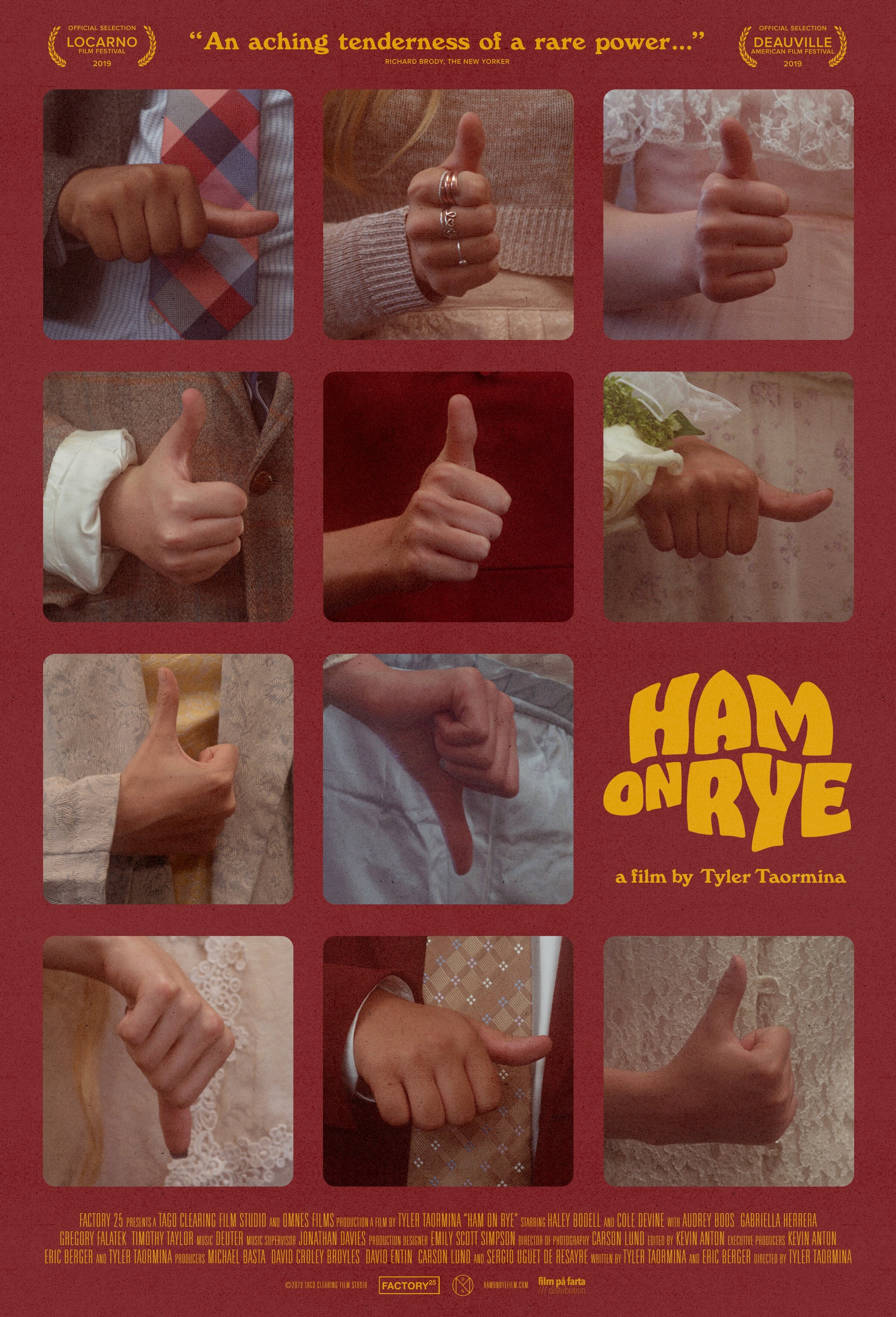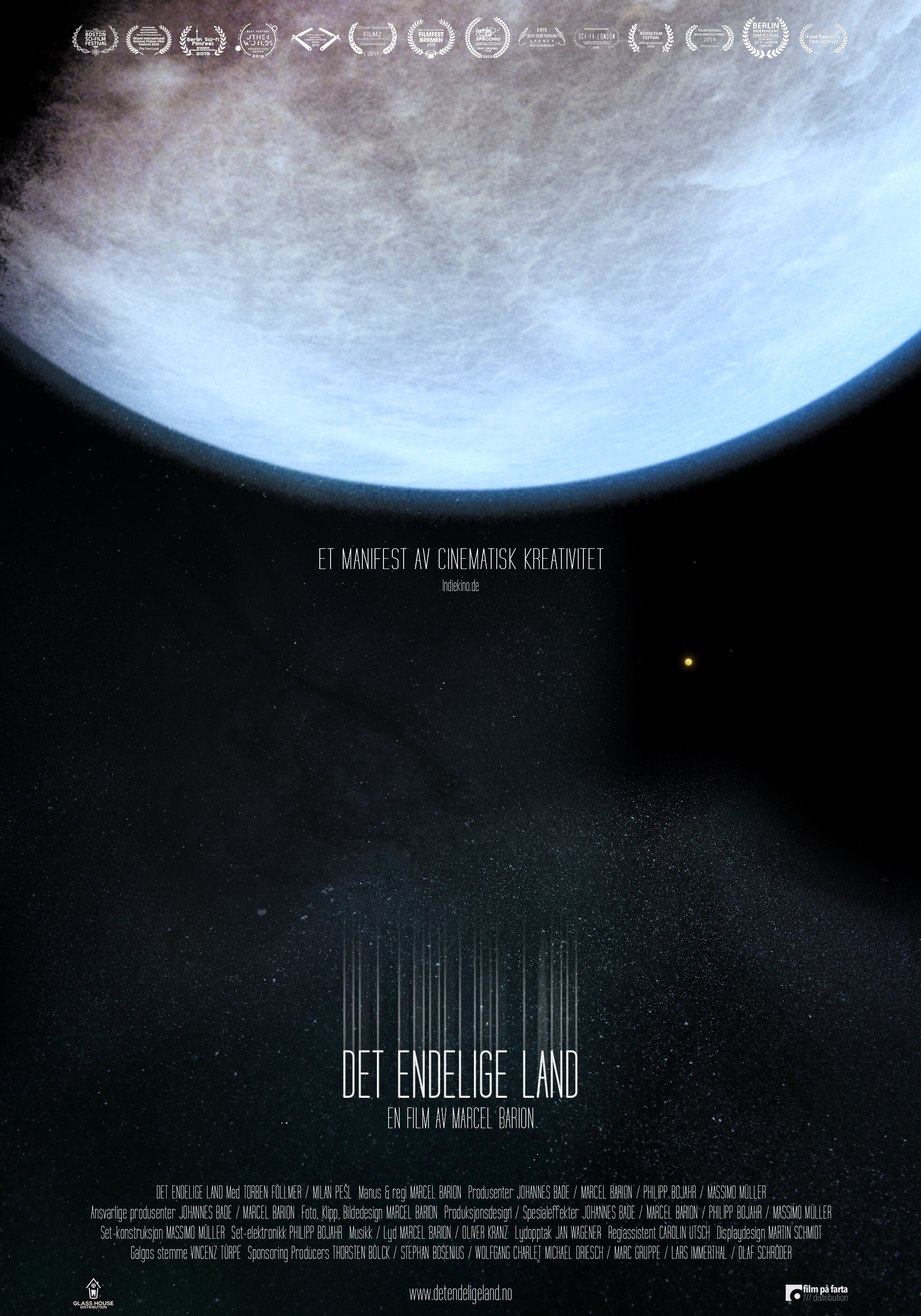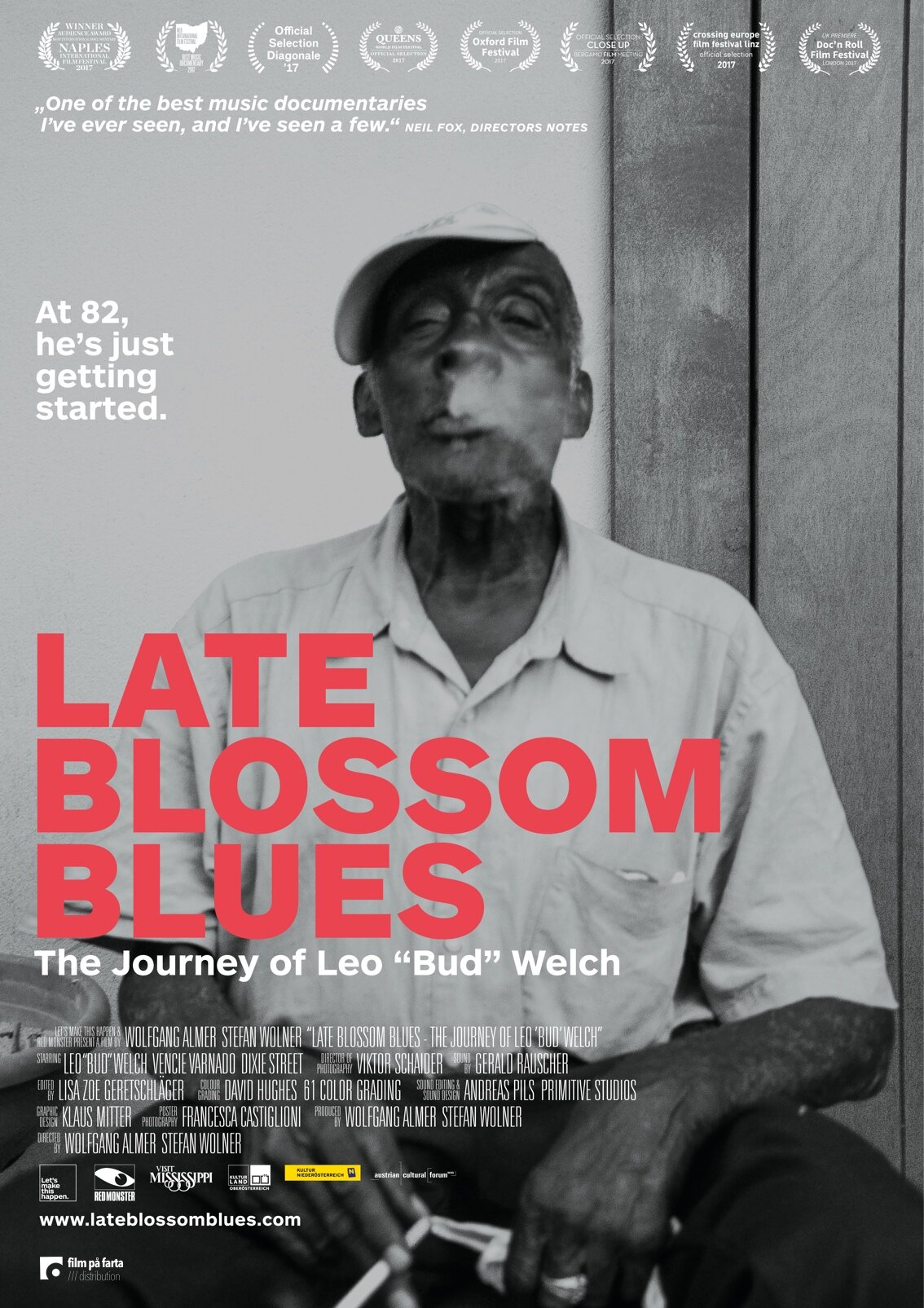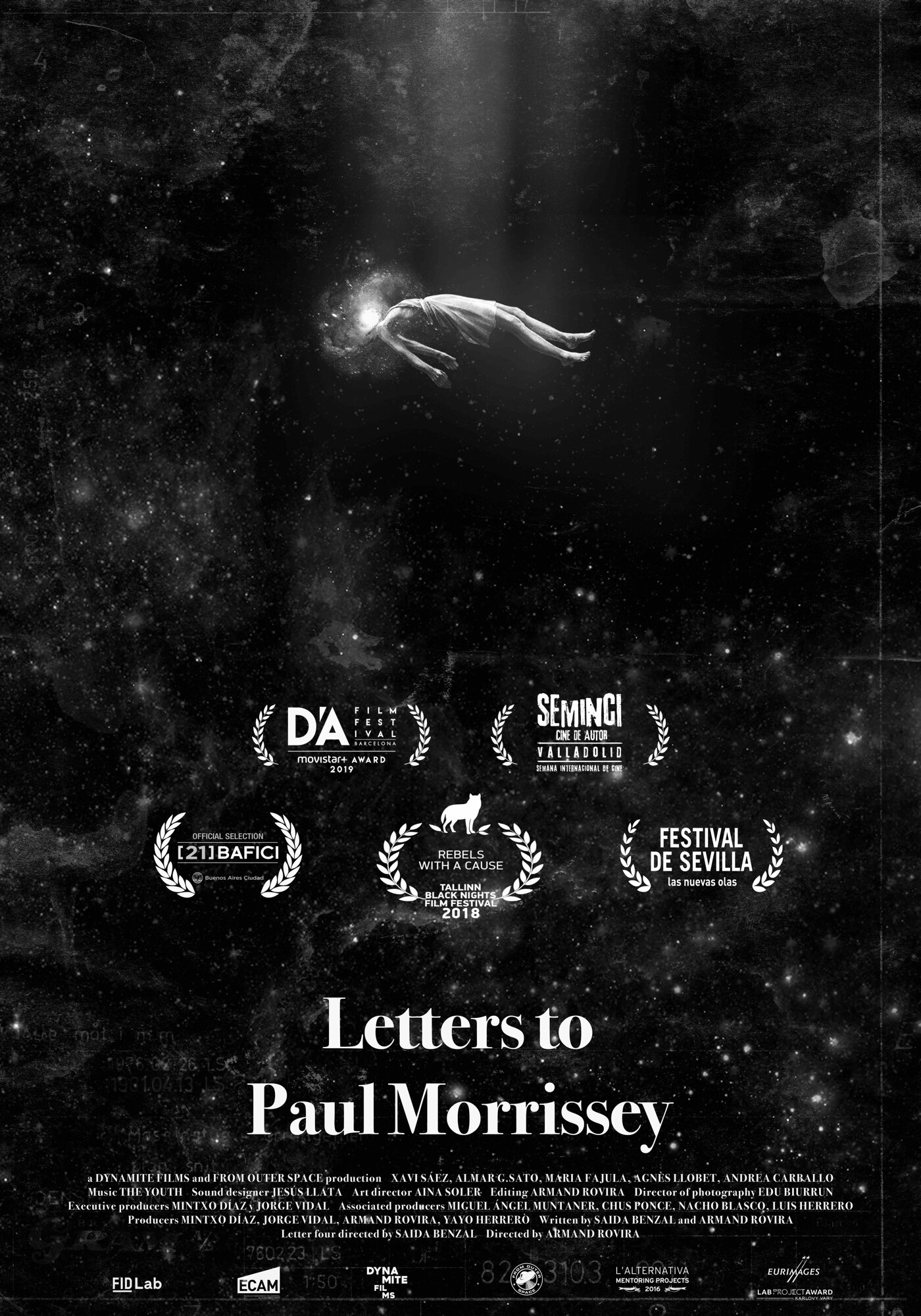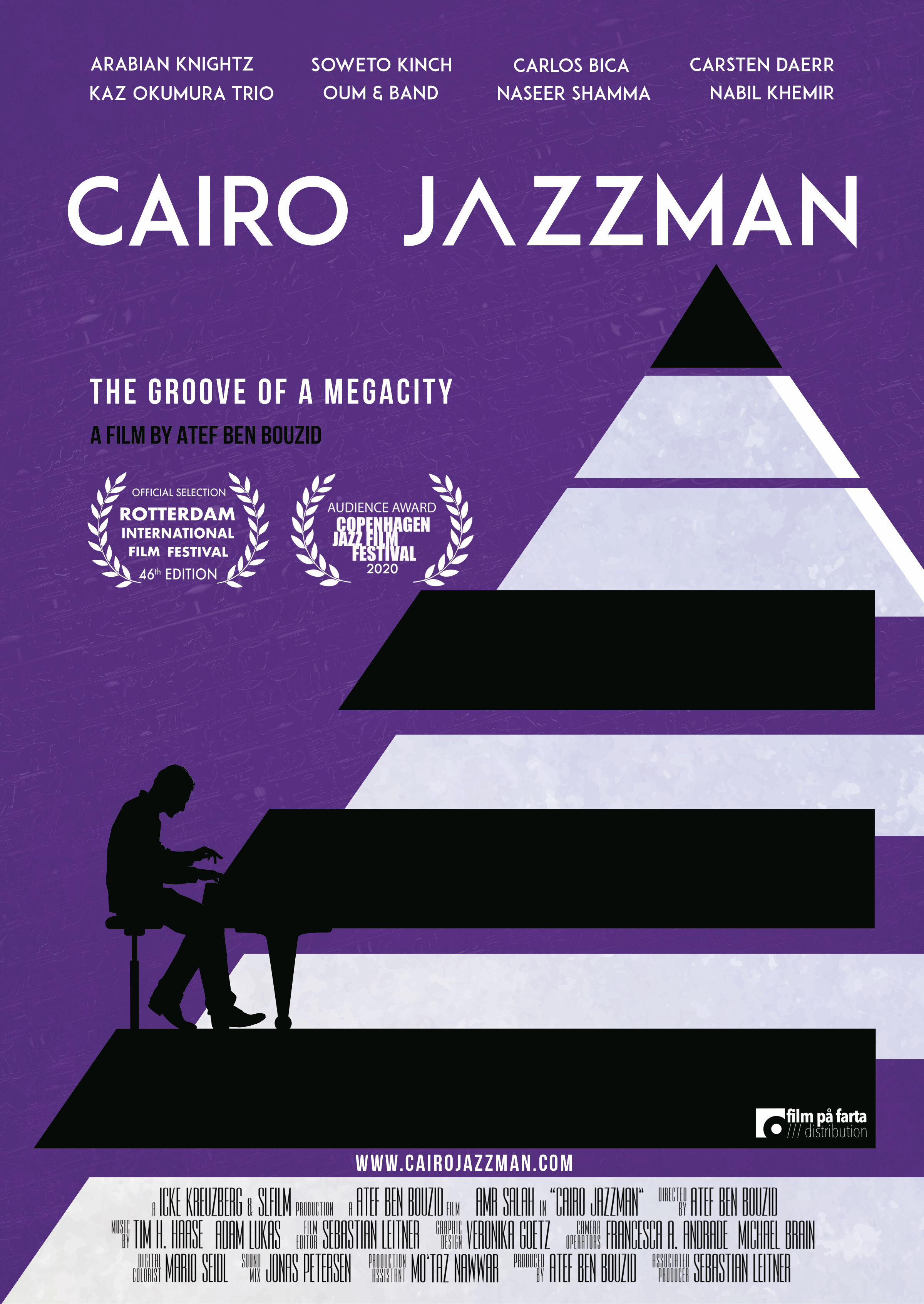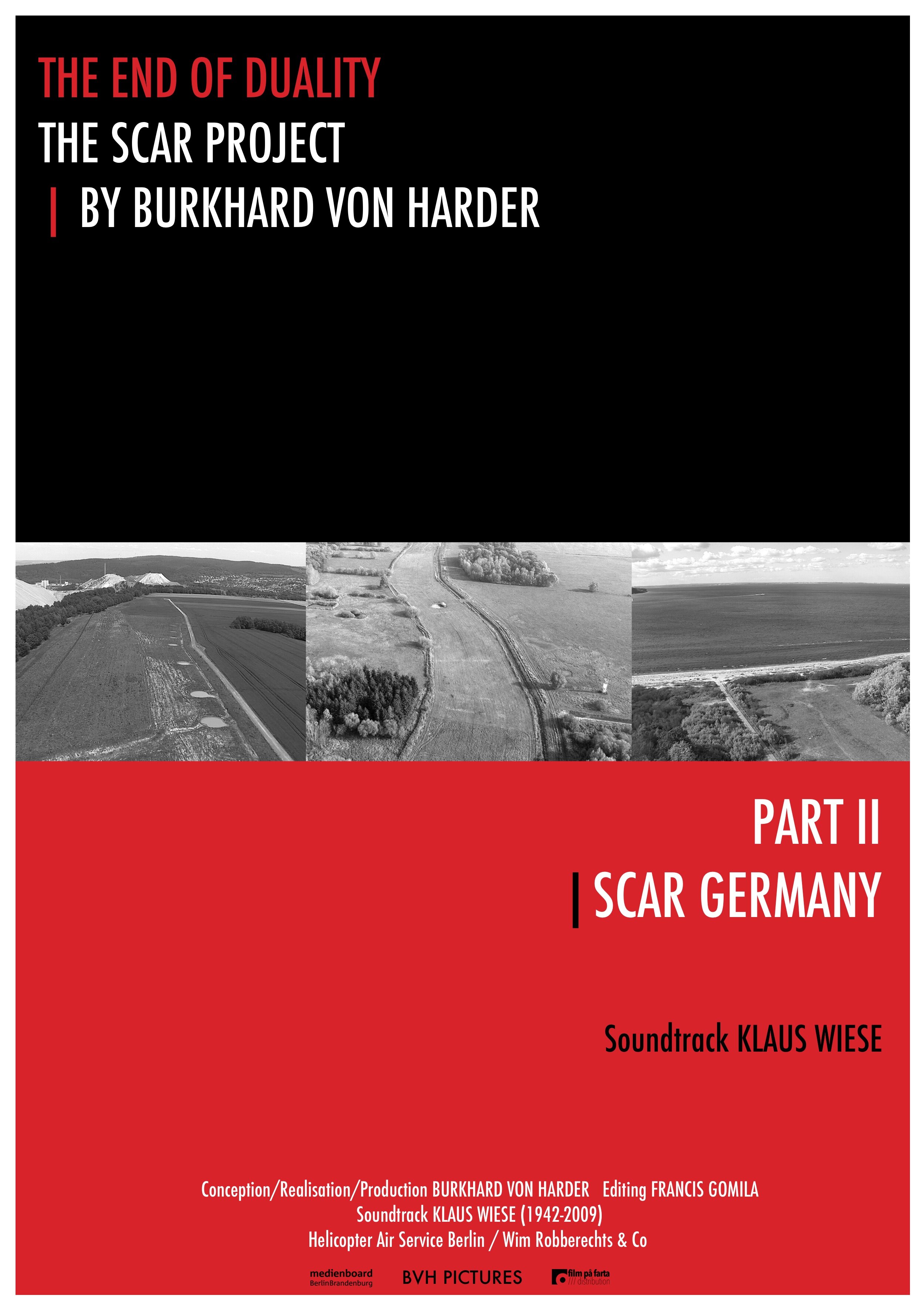MEETING THE BEATLES IN INDIA
Med til nå ukjente bilder og filmopptak med the Beatles.
I 1968 tilbrakte den 23 år gamle Paul Saltzman en uke med The Beatles på ashramet til Maharishi Mahesh Yogi, en av de mest flamboyante guruene i hippietiden. Denne filmen forteller denne ekstraordinære opplevelsen i levende førstehåndsskildring, ved hjelp av mer enn 40 til nå ukjente personlige bilder og filmopptak fra asharmet.
David Lynch er filmens executive producer og filmen er fortalt av Morgan Freeman. Filmen følger Saltzmans livsendrende reise, som startet med et knust hjerte og endte med å lære transcendental meditasjon og å tilbringe tid med John, Paul, George og Ringo.
THE QUEEN OF LIZARDS
A refreshingly experimental rom-com sci-fi with an impressive score. Shot on Super 8.
Alene-mor Berta nyter en sommer med kjærlighet sammen med Javi, en merkelig mann som har dukket opp i livet hennes, og sin datter Margot. Men romskipet som skulle hente Javi dukker ikke opp og Berta opplever det hun frykter mest- et forhold. Åh ja, og en romvesen-graviditet. Filmen er filmet med Kodak Super 8. Fantastisk filmmusikk, forresten.
“Kan en romantisk komedie, science-fiction, „transgression“, og en absurd form for humor komme problemfri sammen i en harmonisk film filmet med Super 8? The Burnin’ Percebes duo beviser at det går an. (…) En episk fest, en stolt absurditet, og en uendelig vits og det tilbakevendende gledelige beviset for at audiovisuelle verk og (absurd) humor ikke kjenner noen grenser.” Alfonso Rivera/Cineuropa.
DET ENDELIGE LAND
Kritikerrost og prisvinnende independent science-fiction-film om to ensomme menn som søker etter et nytt hjem i det uendelige verdensrommet.
DET ENDELIGE LAND (Das letzte Land) | Marcel Barion | Tyskland 2019 | 113min
Et manifest av cinematisk kreativitet, sterk og spennende.
Indiekino.de
En brilliant debutfilm, en visuell fest for øyet og gåtefull science-fiction.
OC Movies
Brilliant skrevet, utmerket skuespill og fabelaktig filmet.
Horror DNA
synopsis
To lovløse på flukt snubler over et gammelt og forlatt romskip. I siste minutt klarer de å unnslippe sine forfølgere og reiser ut i verdensrommet med det gamle skipet på jakt etter et nytt hjem. På reisen beveger mennene seg i to ulike retninger. Mens Adam søker i skipets gåtefulle fortid, blir Novak mer og mer dratt inn i en hypnotisk forbannelse...
Regissør
Marcel Barion født 1985 i Siegen, Tyskland, begynte med film allerede som skolebarn, mest inspirert av internasjonal sjangerfilm. Etter å ha laget mange kortfilmer mens han fortsatt gikk på skolen, produserte han etterhvert en no-budget fantasy spillefilm mens han studerte litteratur, kultur, media og kunsthistorie på universitetet. Etter å ha fullført masterstudiet, jobbet han som universitetslærer i kulturstudier med fokus på bilder og film. DET ENDELIGE LAND er hans første film rettet mot et større publikum.
SYNOPSIS
Two men flee from a desolate planet in a small old spaceship and embark on a quest for a new home. On their search for a better place, the two are drawn increasingly in fundamentally different directions. While Adem wants to find out where the ship actually comes from and what happened to the old crew, Novak is drawn more and more into the spell of a hypnotic power...
director
Marcel Barion, born 1985 in Siegen, Germany, began filmmaking as a schoolkid, mostly inspired by international genre cinema. After having made many short films during schooldays (and yet graduating) he produced a no budget but full length fantasy film called "Aloryon" and studied literature, culture, media and art history. Since his master's degree he has been working as a university lecturer in cultural studies with focus on pictures and film. "Das letzte Land" is his first film aimed for a public audience.
directors note
I begynnelsen handlet alt om å lage en mørk og vakker science-fiction verden omkring et lite og slitent romskip uten CGI og uten penger. Jeg skrev manuset mens skipet ble bygget som resulterte i at arkitekturen og historien fløt i hverandre. Utformingen av karakterene ble veldig påvirket av skipets arkitektur og selve produksjonsprosessen. Til slutt var vi glade for å se at vi hadde laget en film om to menn, flukt, søken, frihet og hjem, bare ved å skape deres verden fra vårt veldige personlige ståsted.
directors note
In the beginning our project was all about making a dark and beautiful sci-fi-world around a small and gritty spaceship without any CGI - and without any money. I wrote the script, not before, but while the ship was being constructed. As a result architecture and story flowed into each other and the characters were deeply influenced by the making of the scenery itself and thus by the conditions of the production process. In the end we were glad to realize that we had made a film about two guys dealing with escape, search, freedom and home, just by designing their world from our very own point of view.
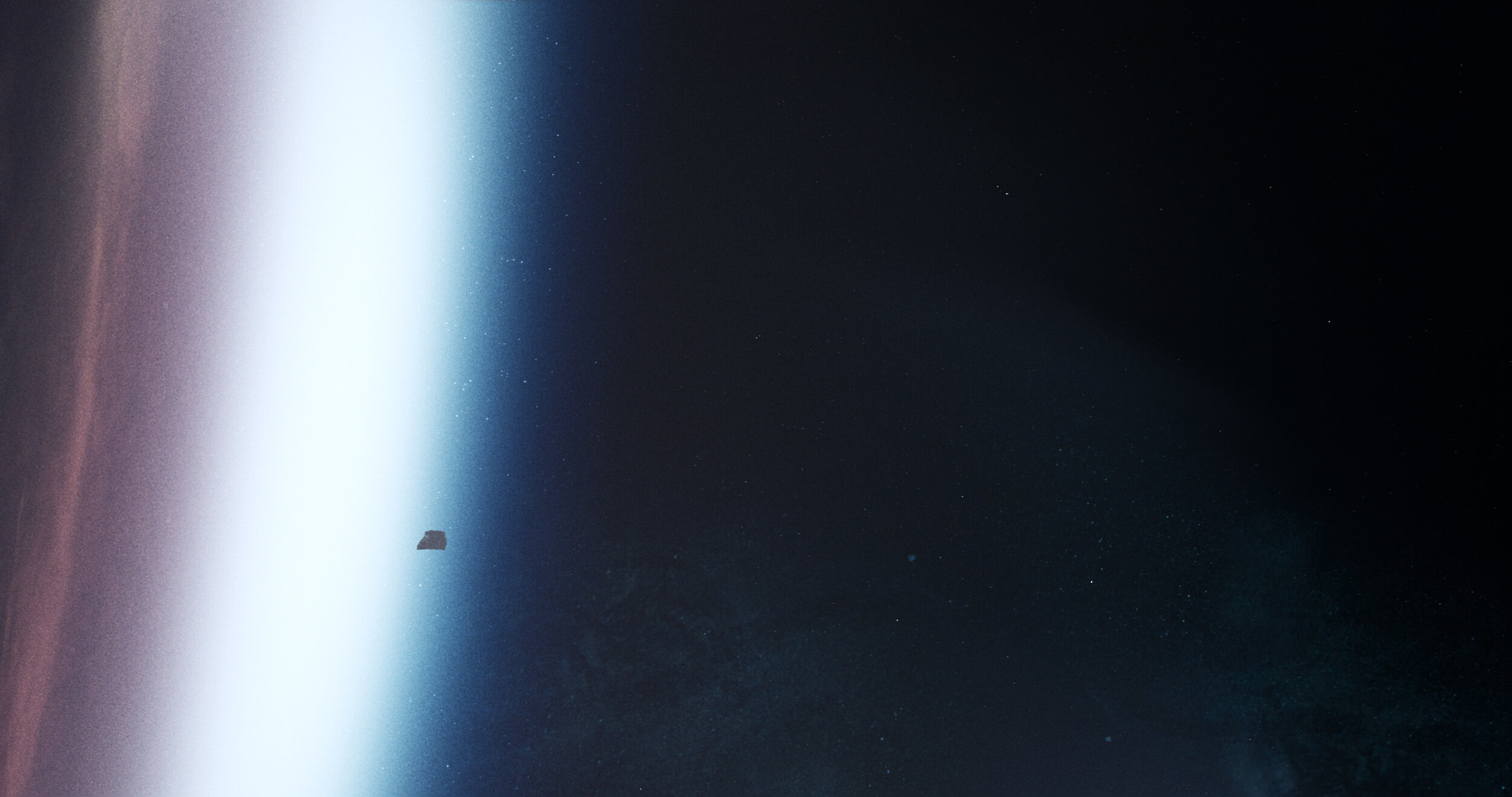
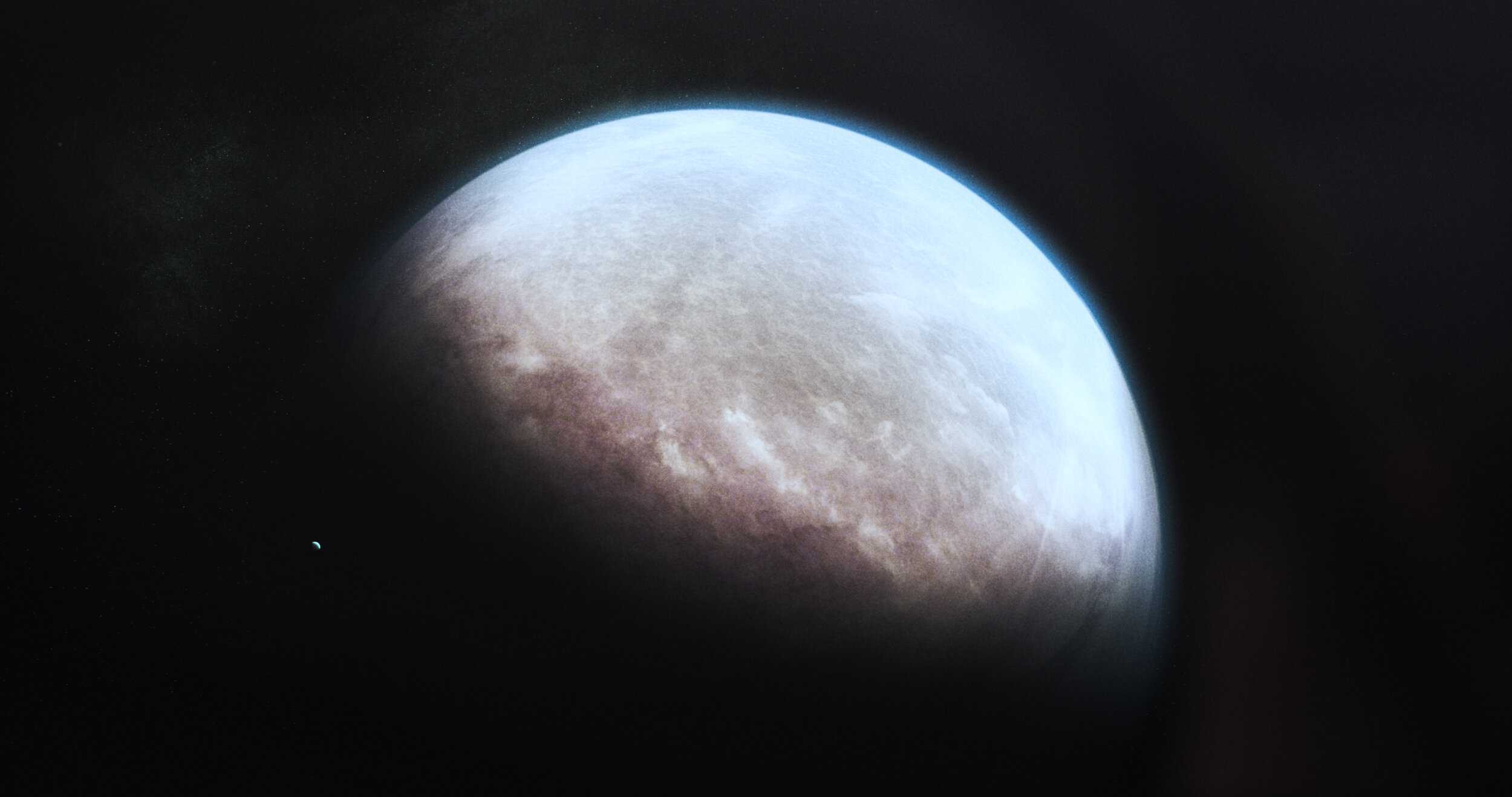
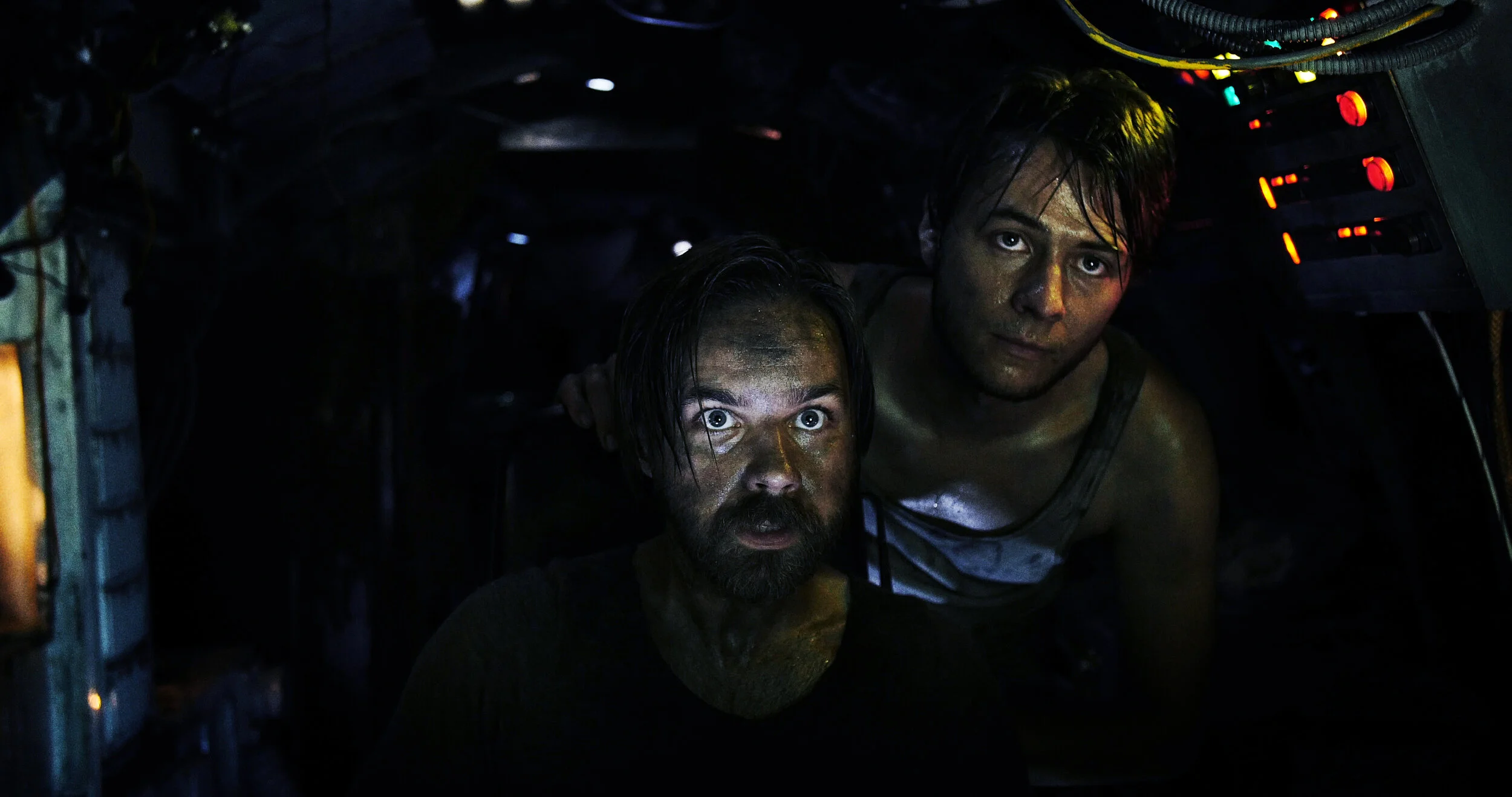
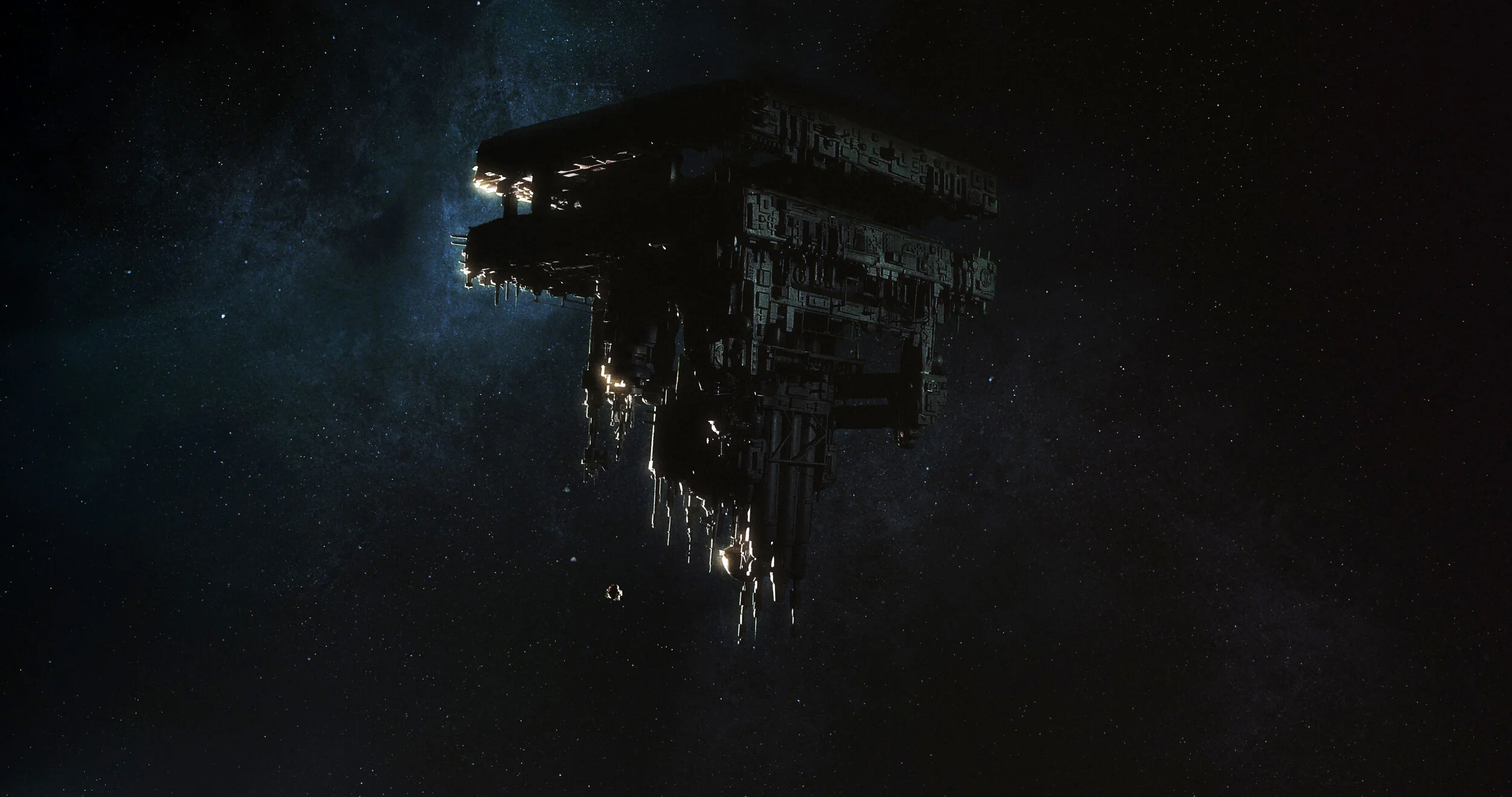
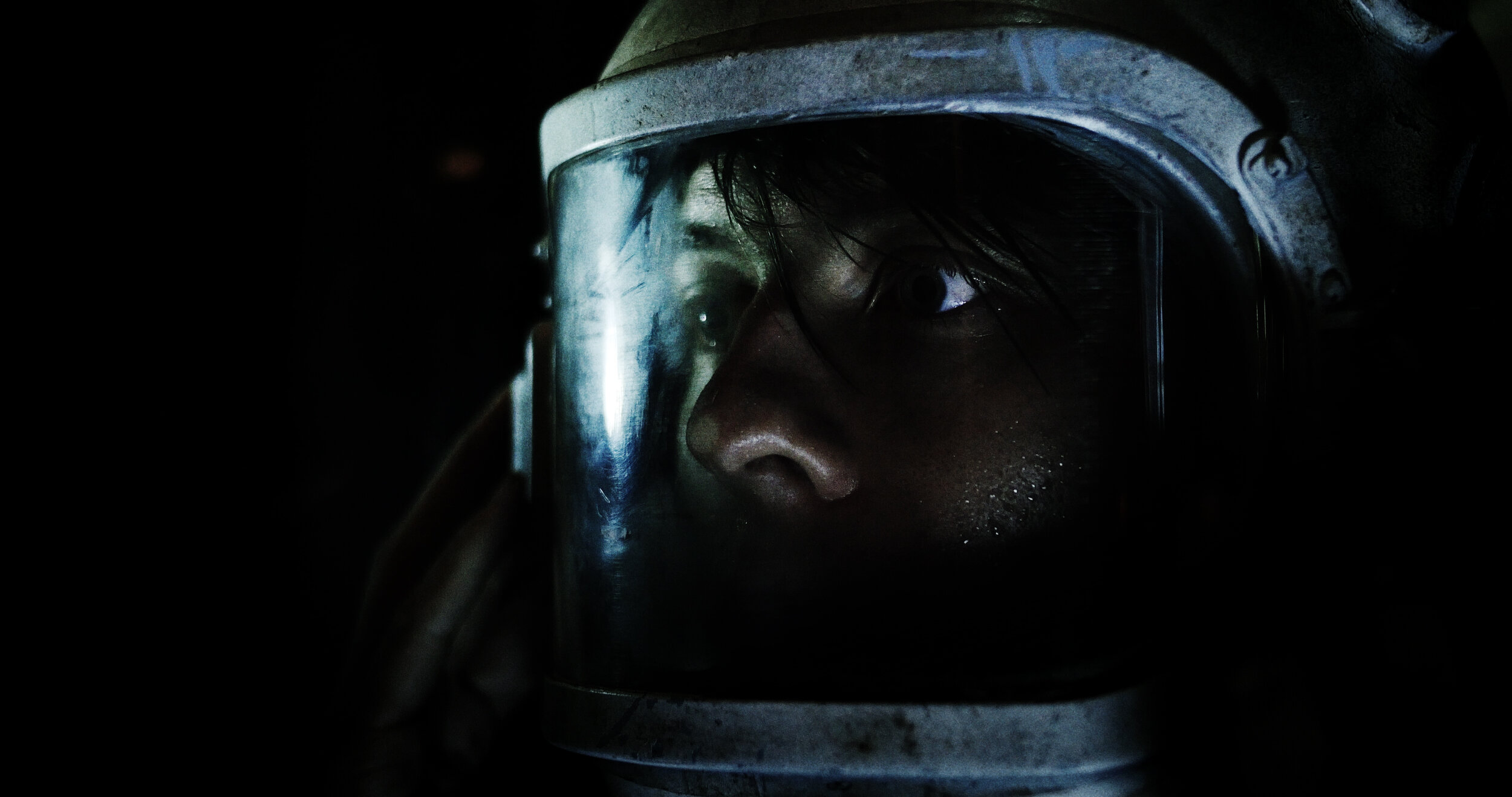
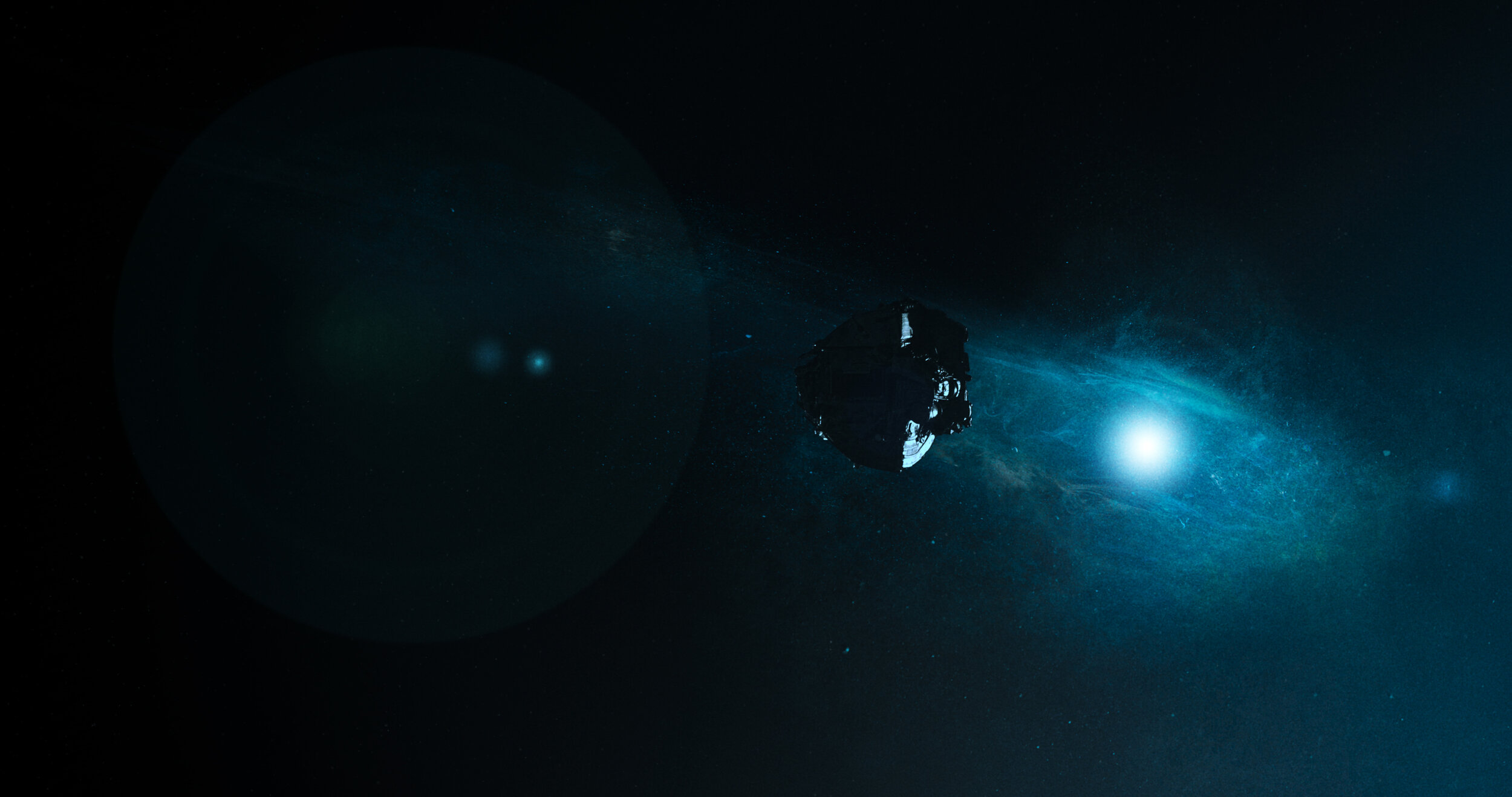
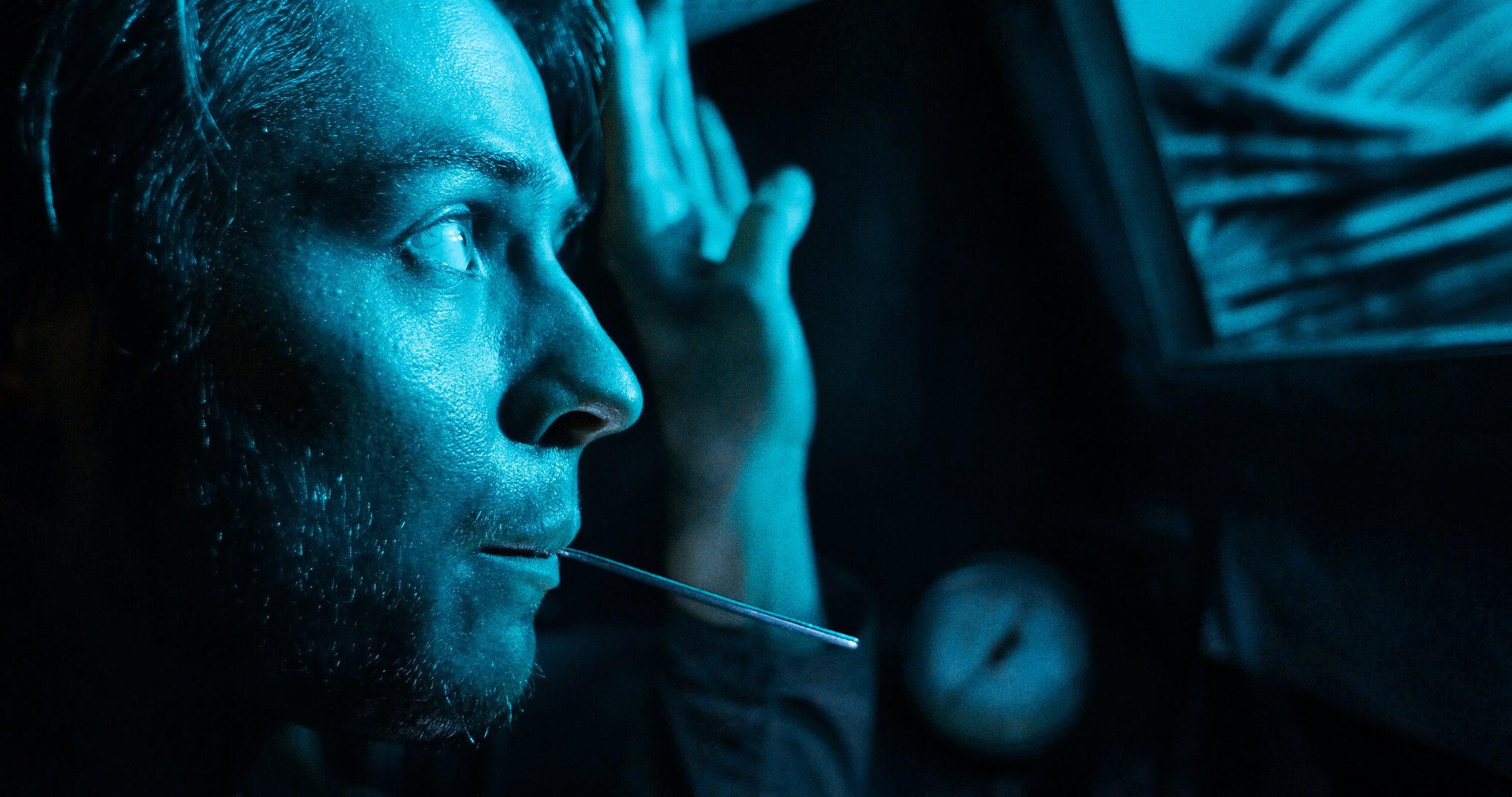
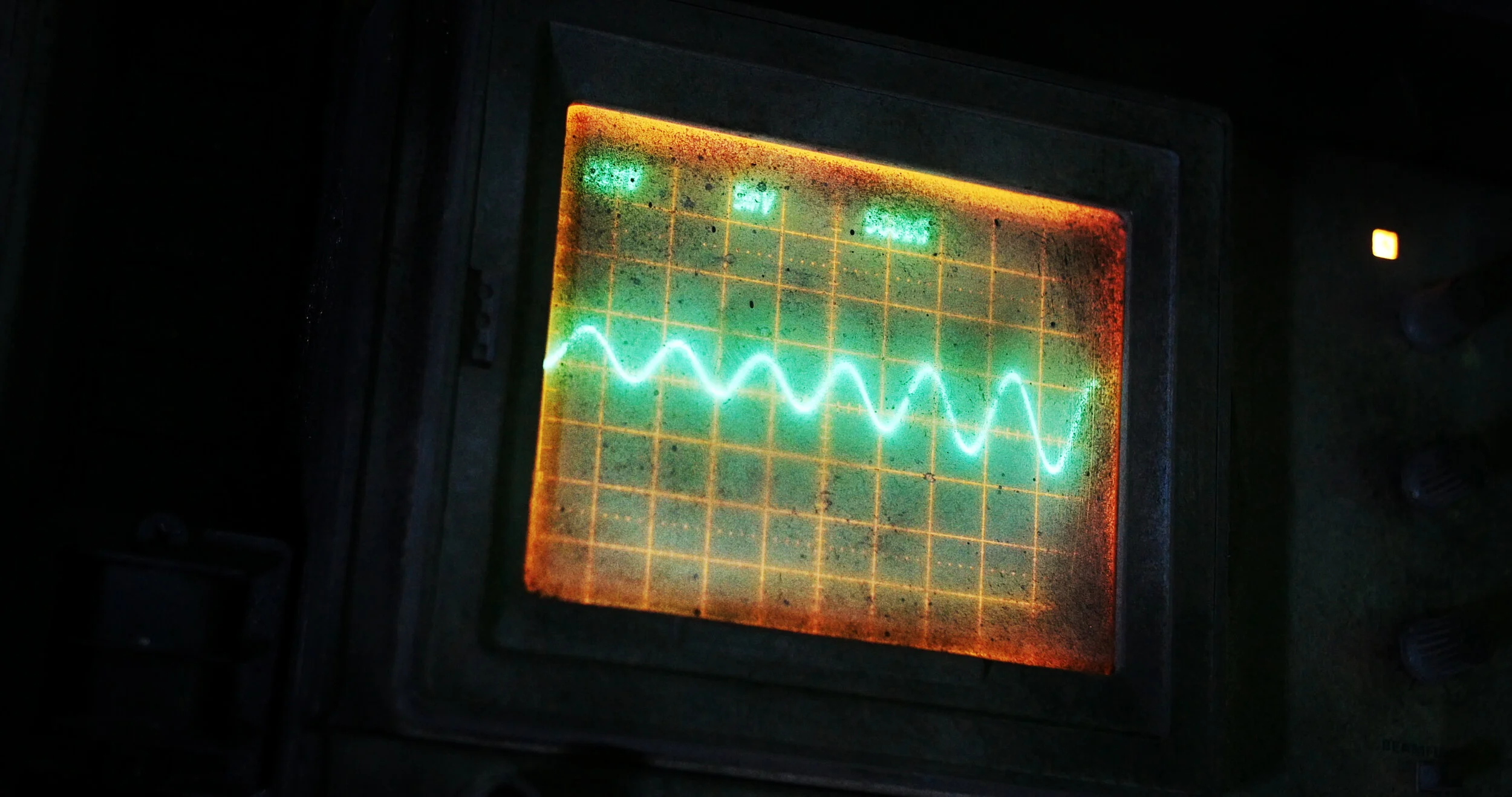
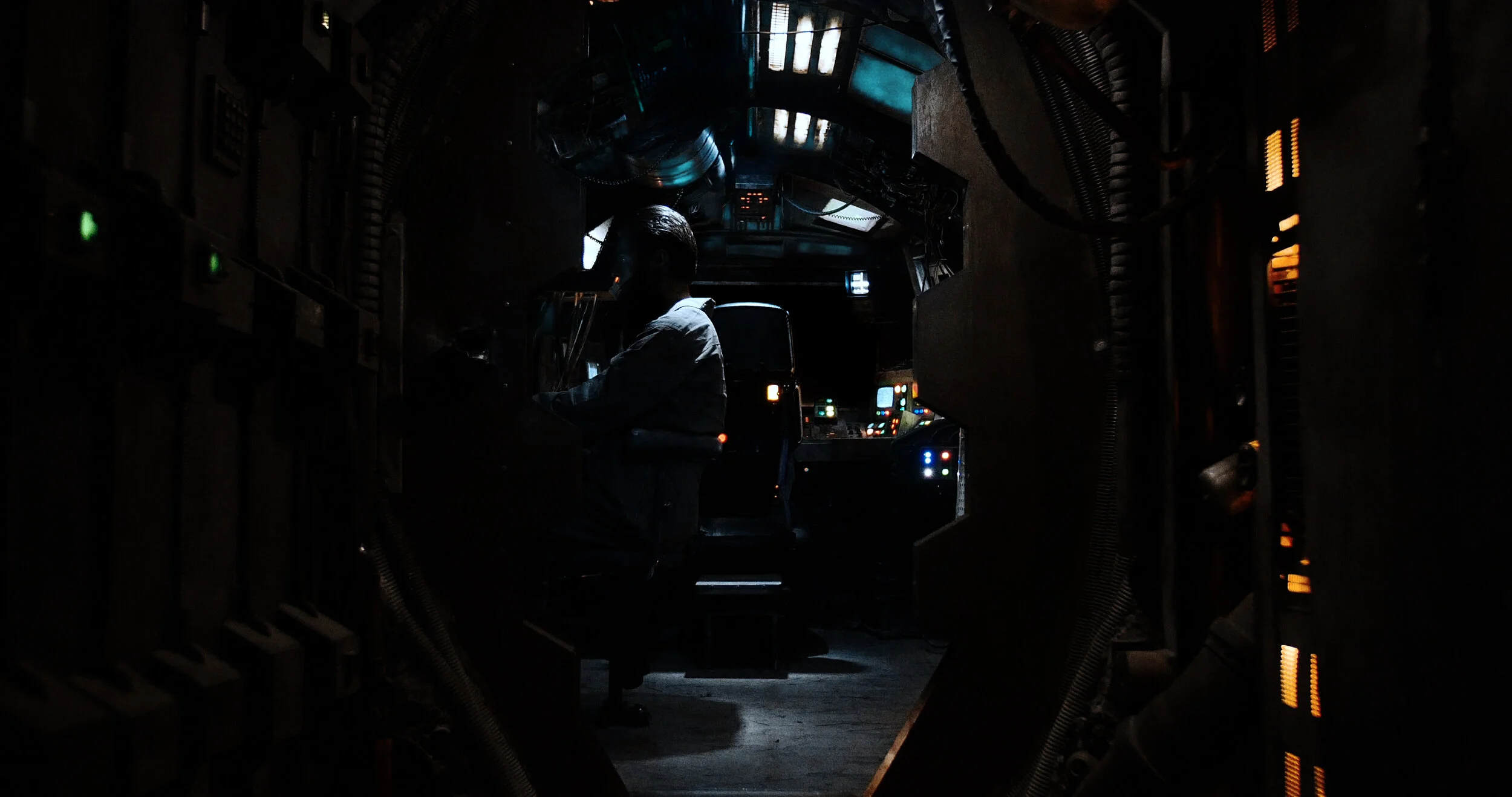
reviews / ANMELDELSER
For meg ligger filmens styrke først og fremst i det visuelle. Den gjennomgående mørke og skitne stilen både hos de som spiller og hvordan vi opplever romskipet, gir i utgangspunktet en god atmosfære for å kunne leve seg inn i dette. Jeg liker måten de bruker lyd og musikk på som står i god stil til den drømmeaktige stilen filmen har. Utformingen av romskipet er fascinerende og det elegant hvordan lyssetting er nøye vurdert allerede fra starten. Man får gode vibber fra 70-tallet og datateknologien de brukte i den første Alien-filmen.
Attack of the Killer Kast
Influences from „2001“ through „En attendant Godot“ to „DAS BOOT“ and the „Odyssey“ (including the sirens) add up to an original story with an existential touch, in which everything fits: a manifesto of cinematic creativity, powerful and thrilling.
Indiekino.de
Celebrated at several festivals, this science fiction film is a chamber play that is carried by its claustrophobic mood, its intensity, its dense field of tension on melancholy and manic obsession. An impressive film that shows that science fiction with little possibilities but great vision is also possible in Germany.
Programmkino.de
The German film The Final Land stands as one of the best of the festival’s six-year run thus far. [...] It stayed with me for days afterward, charting our collective dreams to the stars...and for Other Worlds Austin, a capstone for its sixth year.
Medium
The German filmmaker Marcel Barion, in his first film, crafts an outstanding story, full of wonder and paranoia. Taking place primarily within the confines of a tiny old spaceship, conflicts erupt as two disparate men struggle to find a new home. The Final Land is a brilliant atmospheric film that incorporates the best of elements of science fiction, both hard and soft. Barion achieves magnificent, mindblowing vistas from outside the ship using only traditional effects. With nary a dull moment and an ideal science fiction ending, The Final Land comes highly recommended!
The Geek Curmudgeon
Föllmer and Pesl are both superb in this two-hander, which naturally relies heavily on the actors to carry the weight of the film. Föllmer portrays Adem with a sort of reserved, optimistic melancholy, while Pesl invests his brusque alpha male with a manic obsessiveness. Writer/director/cinematographer/editor Marcel Barion — who also did the breathtaking visual effects, which include gorgeous shots of outer space — creates a tense, claustrophobic setting within the spaceship, aided greatly by Massimo Muller’s masterful set design. [...] Barion and Oliver Kranz’s sound design is superlative, with each swipe of something dusty or dingy giving off sounds that practically make you feel the decay and squalor. The Final Land, a bold feast for the senses, is a mesmerizing journey that pits the wills and minds of two men against each other, themselves, and enigmatic outside forces.
Diabolique Magazine
The Final Land is a gritty, energized sci-fi mystery, piercing with intrigue and claustrophobic atmosphere. It’s a film that rewards paying attention, as the more you look, the more you find. The film’s immersive atmosphere sucks you into the ship’s story. I’ll certainly be rewatching this film to see what more I can find.
TheKnockturnal
Beautifully lit and shot, the intensity of these strangers’ shared predicament feels up close and palpable.
Starburst Magazine
If you get the chance, you have to see this film. It is a dark, subtle and remarkably well made deep space film, something that is far too rare these days.
Mark Cole, Rivets on the Poster
Both Pesl and Follmer perform the roles admirably. Pesl shines when he’s going off the rails, whilst Follmer is the frustrated escapee, struggling to bring Pesl around to the reality. [...] A brilliant debut, a visual feast for the eye and a head-scratching sci-fi which, at times, is just what you want.
OC Movies
Suggesting that Barion could go anywhere next.
Sight & Sound (British Film Insitute)
An Odysseus style pull to its conclusion and a desire to look closer at our protagonists, their experiences and motivations and while that doesn‘t sound like a thrilling adventure it is a brilliantly scripted, excellently performed and stunningly filmed one.
Horror DNA
A suspenseful, transcendental film mélange that proves you don‘t have to look to Hollywood for clever sci-fi stories.
Kino-Zeit.de
Atmospherically dense, kind of a „Das Boot“ in space.
Der Tagesspiegel
DET ENDELIGE LAND (Das letzte Land)
Spilletid: 113 min
Genre: Sci-Fi / Drama
Språk: Tysk
Tekst: Norsk
Land/År: Tyskland 2019
Med TORBEN FÖLLMER / MILAN PEŠL
Manus & regi MARCEL BARION
Produsenter JOHANNES BADE / MARCEL BARION / PHILIPP BOJAHR / MASSIMO MÜLLER
Ansvarlige produsenter JOHANNES BADE / MARCEL BARION
Foto, Klipp, Bildedesign MARCEL BARION
Produksjonsdesign / Spesialeffekter JOHANNES BADE / MARCEL BARION PHILIPP BOJAHR / MASSIMO MÜLLER
Set-konstruksjon MASSIMO MÜLLER
Set-elektronikk PHILIPP BOJAHR
Musikk / Lyd MARCEL BARION / OLIVER KRANZ
Lydopptak JAN WAGENER
Regiassistent CAROLIN UTSCH
Displaydesign MARTIN SCHMIDT
Galgos stemme VINCENZ TÜRPE
Sponsoring Producers THORSTEN BÖLCK / STEPHAN BOSENIUS / WOLFGANG CHARLET
MICHAEL DRIESCH / MARC GRUPPE / LARS IMMERTHAL / OLAF SCHRÖDER
TERRITORIES: NORWAY
Theatrical / All media
FORMAT: DCP
HAM ON RYE
En vakker, merkelig og rar dystopisk coming-of-age komedie.
HAM on rye | Tyler Taormina | usa 2019 | 85 min
HAM ON RYE er en coming-of-age komedie som fokuserer på den nervøse begeistringen til ungdommen og den rare og skumle overgangen inn i voksenlivet og har blitt laget med et omfattende ensemble som inkluderer ikke-skuespillere, musikere, 90-tallets Nickelodeon-barnestjerner og flere andre. Filmen utforsker et småbysamfunns forhold til et skoleball-lignende rituale- og menneskets åndelig forfall. Det begynner publikumsvennlig ala John Hughes, men forvandles sakte til en merkelig og rar dystopi med energien til Dazed and Confused.
HAM ON RYE is a coming-of-age comedy centered on the nervous excitement of youth and the strange horror of entering adulthood uses an expansive ensemble of over one hundred performers, including non-actors, musicians, 90's Nickelodeon child stars, and more, to explore a suburban community’s relationship with a prom-like ritual and the decay of the human spirit. It begins with the crowd-pleasing spirit of a John Hughes movie and fades slowly into an off-kilter dystopia with the energy of Dazed and Confused.
director’s note
Ham on Rye was born from a joke that a friend made in passing, something about how people go to delicatessens to hookup. My eyes went wide, and I fell very much in love with the idea. At 25 years old, I was quite confused and dejected, and there was something so tender and absurd about this joke that struck a chord in me. I said right then and there that I had to make a movie about this place. Nobody had warned me about what it’s like to first realize that your childhood is dead and gone, that you’ve crossed a threshold of no return. I had yearned to cross this barrier throughout my youth, and the scent of romance was my ticket out. I was always dreaming of it. Then suddenly, the heartbreak I experienced in losing this time of purity… oh no! I had to do something. The energy gained from this shock had to go somewhere.
From that moment on, I lived in that delicatessen every day when I’d close my eyes. The images that first came to my mind were of teenagers in outdated formalwear, biting into sandwiches, and sneaking glances at one another—so tender and absurd! Then, from these images unfurled a world of subconscious joys and fears, all of which you can see in the film. I told my close friends—with whom I partner in Omnes Films, a Los Angeles-based film collective—that it was time to produce our first feature-length film. It was a frightening proposition for us all. We’d never taken this step even though we’d been making films since we were kids. The team is composed of brilliant minds and best friends. Without these few (who are basically all credited as producers), this film would have been either impossible to make or barely half as good. When I shared the script with the Omnes team, they instantly understood the vision. I had only produced one short film and a handful of miscellaneous projects before preparing this one. We only had a tiny portion of what’s normally considered a micro-budget, having tried and failed at crowdfunding and only raising three thousand dollars. After seven months of rigorous preproduction, we embarked on a sixteen-day shoot, which corralled over one hundred people in the cast and around sixty locations. It went smoothly and was very fun. We were always laughing and listening to super loud music during setups and sometimes during takes. I was mostly the set-DJ and would try to find the perfect songs to energize the space as needed. I probably spent way too many hours making playlists for different shoot days and each day had a specific song marked on the call sheet.
Ham on Rye is an ecosystem film where there are no extras. The camera, like some curious animal, wants to learn of every face and object that occupies the environment. Gradually and collectively, these disparate pieces communicate an emotional experience, and perhaps something to gather about a milieu. This approach to filmmaking is important to me because ecosystem films tend to have a very specific and sacred relationship with both space and time. The first images of my film are of a group of people trying to light a firework. When a fuse begins to burn our awareness of time becomes instantly heightened. When the firework explodes, the movie is over.
Ham was made with much love and levity and I hope you can feel that when you watch this movie. Making this film felt right through and through, and it managed to bring an entire community of people together. I appreciate its shape, its rhythms, and of course, all those wonderful faces so full of life.
ANMELDELSER / REVIEWS
“A hauntingly off-kilter revision of the end-of-high-school drama, that has the uncanny echo of a disturbing real-life dream.”
THE NEW YORKER
“Ham on Rye is a satirical parable on conformism and aspiration, and it speaks to anyone who, in settled adulthood, looks back to when their life and romantic chances were arbitrarily decided by a few events in their teens and early 20s.”
THE GUARDIAN
“[An] impressive movie, which sheds its naturalism slowly as it embraces a surrealism that’s both disquieting and poignant.”
THE NEW YORK TIMES
“A Wonderfully Weird, Surreal Coming-Of-Age Satire.”
THE PLAYLIST
“Ham on Rye Is an Elegant, Grand Chronicle of a Chaos Foretold”
SLANT MAGAZINE
SUITABLE FOR ALL / TILLATT FOR ALLE
LATE BLOSSOM BLUES
LATE BLOSSOM BLUES | wolfgang almer & stefan wolner | austria 2017 | 89 min
SYNOPSIS
When 81 year-old Leo “Bud” Welch from the Mississippi backwoods released his debut record “Sabougla Voices” in 2014, it took the Blues world by surprise: Where has this guy been the last 60 years? Why has nobody ever heard of him before?
When he started playing 10-15 shows every month, even getting invitations to Europe and Africa, more questions arised: How is this possible for a guy his age? Who makes all these shows happen?
Answers are given in LATE BLOSSOM BLUES, a feature-length Documentary about Leo “Bud” Welch and his very late rise to stardom. It’s the quintessential Blues story – a story about poverty, about work in the cotton fields and the woods, about The Lord and The Devil, and of course a story about life that reminds us that it’s never too late to live your dream.
LATE BLOSSOM BLUES follows Leo and his manager Vencie Varnado, a Gulf War Veteran, as they balance the tight rope between business and geriatrics, between jet lag and sound check. It also paints a heart- warming portrait of Leo’s small hometown Bruce, MS where Leo’s daily life is still untouched by his late global fame.
Documenting the most exciting times in the life of one of the last real Bluesmen, LATE BLOSSOM BLUES is a film of historic dimension for all music-lovers. It’s a moving account of a hard working man, who, despite all the adversaries, never wavered from his passion and waited more than 70 years to finally live his dream.
SYNOPSIS
Når 81 år gamle Leo «Bud» Welch fra Mississippi lanserte sitt debutalbum «Sabougla Voices» i 2014, så overrasket han Bluesverdenen: Hvor hadde denne fyren vært de siste 60 åra? Hvorfor hadde ingen hørt om han før? Når han begynte å spille 10-15 konserter hver måned, og til og med fikk invitasjoner fra Europa og Afrika, dukket det opp flere spørsmål: Hvordan er dette mulig for en mann i hans alder? Hvem organiserer alle disse konsertene?
Svaret er gitt i LATE BLOSSOM BLUES, en dokumentarilm om Leo «Bud» Welch og hans veldig sene vei til berømmelse. Det er den ultimate bluesfortellingen - en fortelling om fattigdom, om arbeidet i bomullsåkrene og skogen, om gud og djevelen, og selvfølgelig en fortelling om livet og at det aldri er for sent å leve ut sin drøm.
LATE BLOSSOM BLUES følger Leo og hans manager Vencie Varnado, en golfkrigsveteran, mens de balanserer på en stram linje mellom business og geriatri, mellom jetlag og lydsjekk. Den maler også et hjertevarmt portrett av Leos lille hjemby Bruce, MS hvor Leos hverdag fortsatt er upåvirket av Leos sene globale berømmelse.
Ved å dokumentere den spennende tiden til en av de siste virkelige Bluesmennene, er LATE BLOSSOM BLUES en film av historiske dimensjoner for alle musikkelskere. Det er et vakkert regnskap over en hardarbeidende mann, som tross alle motstand, aldri vek fra sin lidenskap og som ventet mer enn 70 år på å endelig leve ut sin drøm.
director
Wolfgang Pfoser-Almer is the man who came up with the idea for this movie. He is the Driving Force behind this project and is Director and Producer of the movie. He has 17 years of experience in music, event and multimedia work and has founded four companies on the way. However, LATE BLOSSOM BLUES is his first real movie project.
Wolfgang has discovered, supported and promoted many award-winning artists in his home country Austria and currently works as freelance curator and artistic director of a big open air festival called LINZFEST and he was the first to invite Leo “Bud” Welch to Europe to play on 2014′s LINZFEST – that’s where this whole thing started.
He has a long record of pioneering breathtaking artists like Tuscon legend Billy Sedlmayr, Chinese electronic pioneers FM3 or Turkish Gezi Park activists Bandista in Austria and Europe – both as a festival promoter and with his booking agency popfakes booking (2001-2011). Wolfgang holds a Master’s degree in Film & TV-Production and in Business Administration and has done minor work as actor, location scout and consultant on local film productions. He lives and works in Vienna.
Stefan Wolner is the Co-Director. With his company Red Monster Films, he’s also co-producing LATE BLOSSOM BLUES.
Stefan has been making movies since his early teenage years. He worked at ORF (Austrian Broadcasting Company) as director and was part of many successful projects there. He realized many short movies, advertisement and industrial movies and has won several international awards. Since 2012, Stefan also worked as production & unit manager, e.g. for the six-episodes TV-series ‘Wagner vs. Verdi’, for the nature documentary “The Triumph of the Tomato” and for ORF’s children’s programme.
Stefan holds a Degree in Media Design and a Master’s Degree in Film- and TV Production. He lives and works in Vienna/Austria and has a pretty cool office in an old medical practice.
DIRECTORS NOTE
I first heard of Leo „Bud“ Welch in 2013 while researching for a music festival that I direct artistically called LINZFEST. This festival always has a very specific topic, and for 2014, our topic was “Old Is The New New” – so I was, among other things, looking for really old artists. I originally tried to get ahold of CeDell Davies who I had earlier seen at a club show around the corner from my flat in Vienna, Austria.
So I contacted CeDell’s record label Fat Possum to ask for his booking contacts. I quickly got a reply from Fat Possum-owner Bruce Watson who told me that CeDell is not available, but that there’s that other guy, Leo Welch. Bruce sent me the link to the now infamous first video of Leo playing on his now-manager’s birthday party.
I was immediately hooked and decided to invite Leo over to my festival – his first invitation to Europe! Considering him being 82 year’s old, I proposed a very relaxed schedule to his manager: He should fly in on Thursday, relax on Friday, play one show on Saturday, relax on Sunday and fly back to the US on Monday. His manager’s reply was: Hey, we want to play more!
So I booked him two more shows on my festival, and the manager even booked two more shows in Italy on the days before the festival. It dawned on my then that I was in for something pretty unusual.
The festival came and Leo (and Dixie) played his first European show to an enthusiastic crowd of about 500 people – I remember one guy even having tears in in his eyes. Then we drove them off to their second show in a club nearby where they were part of our After Show program. We messed up the organization, so Vencie and Dixie had to set up the backline and the PA themselves while people were already waiting for them to start – but they were totally relaxed about it. “It’s just like in a Juke Joint. We love it!” was Vencie’s smiling comment on this mess we created. The club was packed and there was no room for a chair for Leo, so he just sat on his amp and started playing. I had to leave for the festival area again and told them to call me after their show to wrap everything up. They started at about 11:30 pm. Two hours later, I suddenly realized I got no call from them yet, so I went back to the club, and I couldn’t believe what I saw: The club was still so packed, I couldn’t even get in. People were dancing like crazy, the club was literally smoking – all because of an 82-year old man, at 1:30 in the morning! Even Vencie and Dixie refer to that concert as their best show ever.
I still had no idea that I was about to make a movie about Leo – otherwise I would have put some cameras in that room.
In the weeks after the festival, I read up about Leo and learned about his life, the decades of hard work in the cotton fields and the woods, the missed opportunities and his now only-starting career. I hadn’t even been aware of all that before! And one day, while laying in bed the morning, it suddenly popped up in my head: I have to make a movie about Leo! I had been toying with the idea to start a career as a filmmaker, focusing on documentaries about artists – but I had never come across the right artist to start with. And suddenly there it was right before me: The quintessential Blues story.
So I asked Vencie and Leo if they were OK with this – they were. To my utter surprise, nobody had come forward before me. I was in for my first movie! What followed was an incredible frenzy of setting up production, photo-finishing a crowdfunding campaign, researching and planning. I was lucky to find some incredibly talented film pros to help me, the total film beginner, to make this movie happen. To cover all the costs, I maxed out my credit card and my bank account for months on end.
When finally in the US shooting, we captured as much of Leo’s present life as possible. What’s most striking about Leo is that while he’s being praised all over the world for his music, he’s totally untouched by it in his daily life. He doesn’t spend a lot of money, he still lives in his shack, heck, many people in his home town still don’t have a clue who he even is. Also, he still plays the Gospel in church every other Sunday and has faith that his life, including his late success, is in The Lord’s hands. It’s like in his daily life, he’s fallen out of time. So we focused on the contrasts between Leo’s daily life and his life on the road, playing concerts, giving autographs, interviews, taking selfies with fans a quarter his age.
Since all photos and memorabilia of his early life were lost in a fire in the 1980s, we couldn’t rely on archive footage to tell Leo’s past. This turned out to be a good thing for us because it forced us to be creative and tell Leo’s past with images of today. We believe this further helped the narrative of the old man fallen out of time.
I also set up a tour in my home country Austria for Leo where we were hoping to capture Leo’s life on the road, his reactions to a very different culture – and weather, since the tour was scheduled for snowy December. We didn’t do a whole lot of planning for those five days, we just followed Leo, Vencie and Dixie around and gave the inevitable road stories of travelling with an 80+ year old man time to unfold.
Throughout filming and editing, we realized that even though the story of Leo’s late success is incredible, what’s even more amazing is Leo’s good-hearted, down-to-earth character. So we structured the movie more and more about Leo himself and less about his story, though it of course still plays an important part in the movie.
I believe we created a movie that provides many insights into Black America and the still very much existing Blues World. It also tells the story of a poor black man who never wavered from his dream to be a musician. And that’s what we’re hoping to remind our audience of: With passion and patience, it’s never too late to live your dream.
Reviews
Intoxicating … you won’t want to miss a second.
Rocking Magpie
Nothing short of Herculean … the visual imagery is stunning.
Blues Blast Magazine
… music fans from all over the world should check out this great documentary.
Elmore Magazine
Highly recommended … an inspiration.
Making A Scene Magazine
Remarkable … reflects an artist who knew his calling from early on, yet had to wait for the world to catch up.
Lee Zimmermann
The Grandpa Moses of The Blues … A tale worth hearing. Inspiring.
Jazz Weekly
A beautiful tribute … compassionate, yet frank.
John Moore
One of the best music documentaries I’ve ever seen. Incredibly moving and beautifully put together.
Director’s Notes Top Ten Films List of 2017
Heartwarming.
American Blues Scene
…beautifully shot, expertly edited and a real pleasure to watch.
Ray Templeton
…authentic and unexpected.
No Depression Magazine
Revealing … delightful, stylishly filmed documentary.
Trevor Hodgett
…excellent story, and this documentary does a great job of getting it across.
Michael Doherty’s Music Log
This film is essential viewing for all fans of authentic blues.
Musoscribe
…shows how Welch takes on the experience of a lifetime.
Bill Bentley
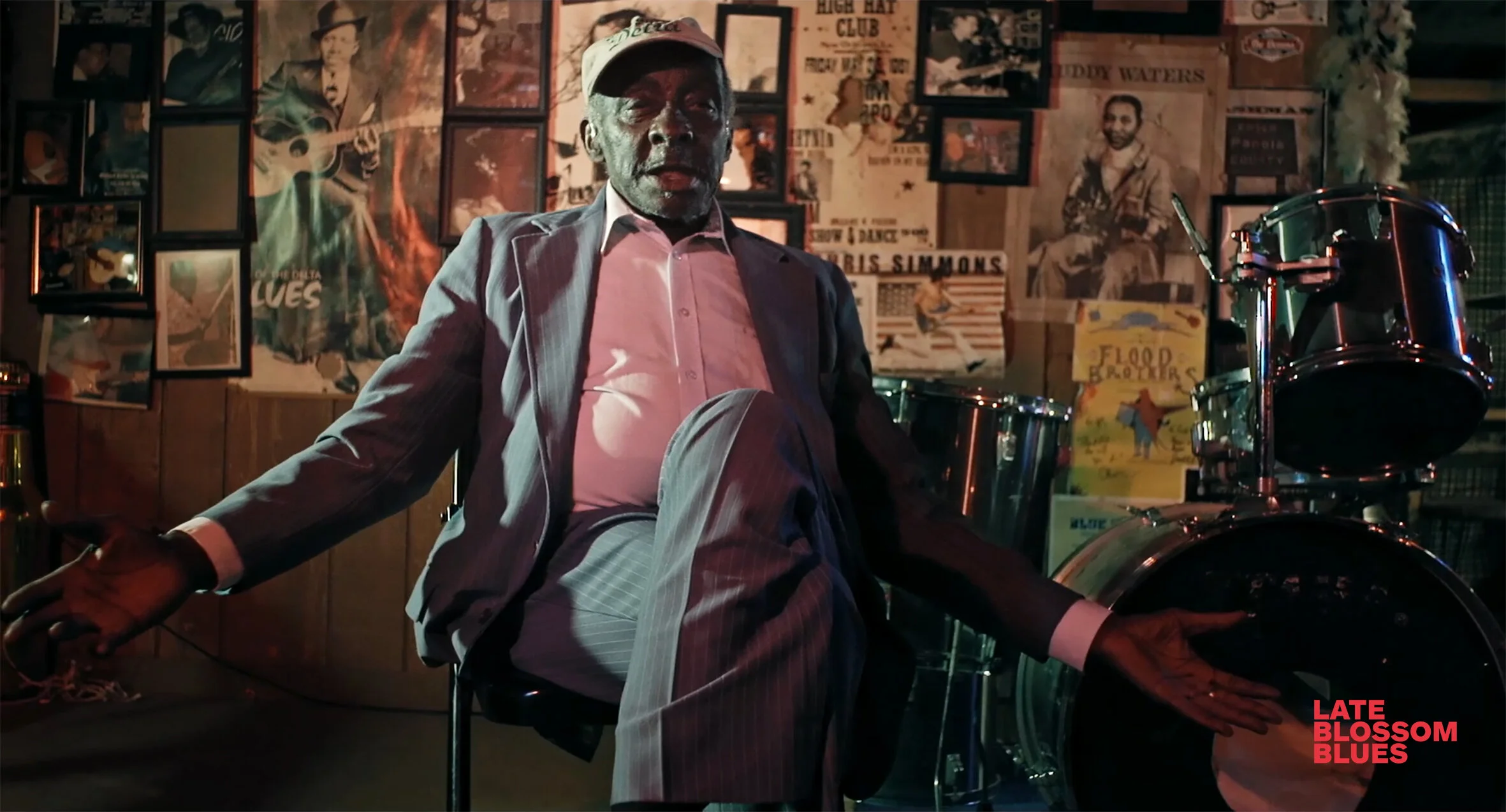
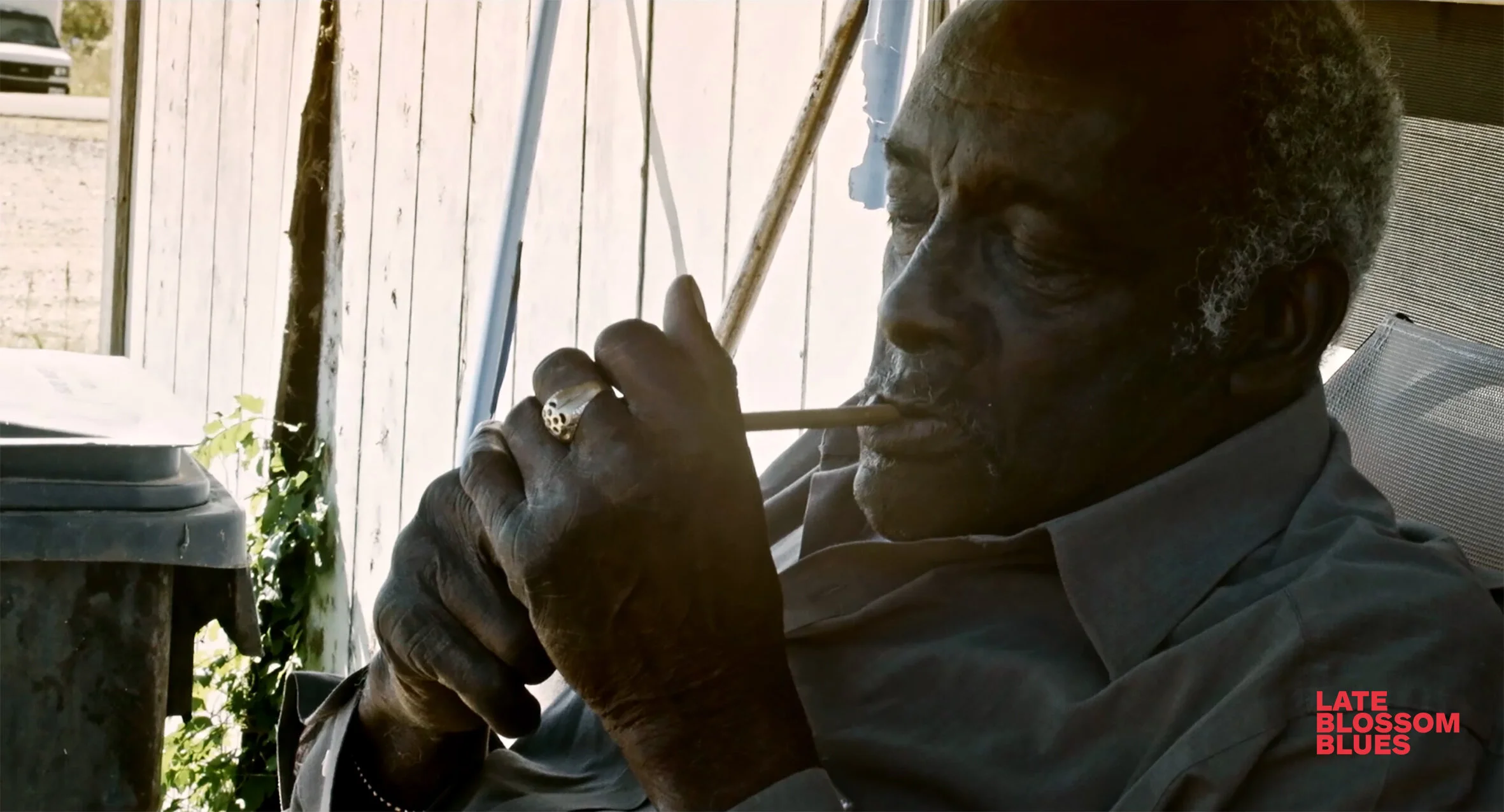
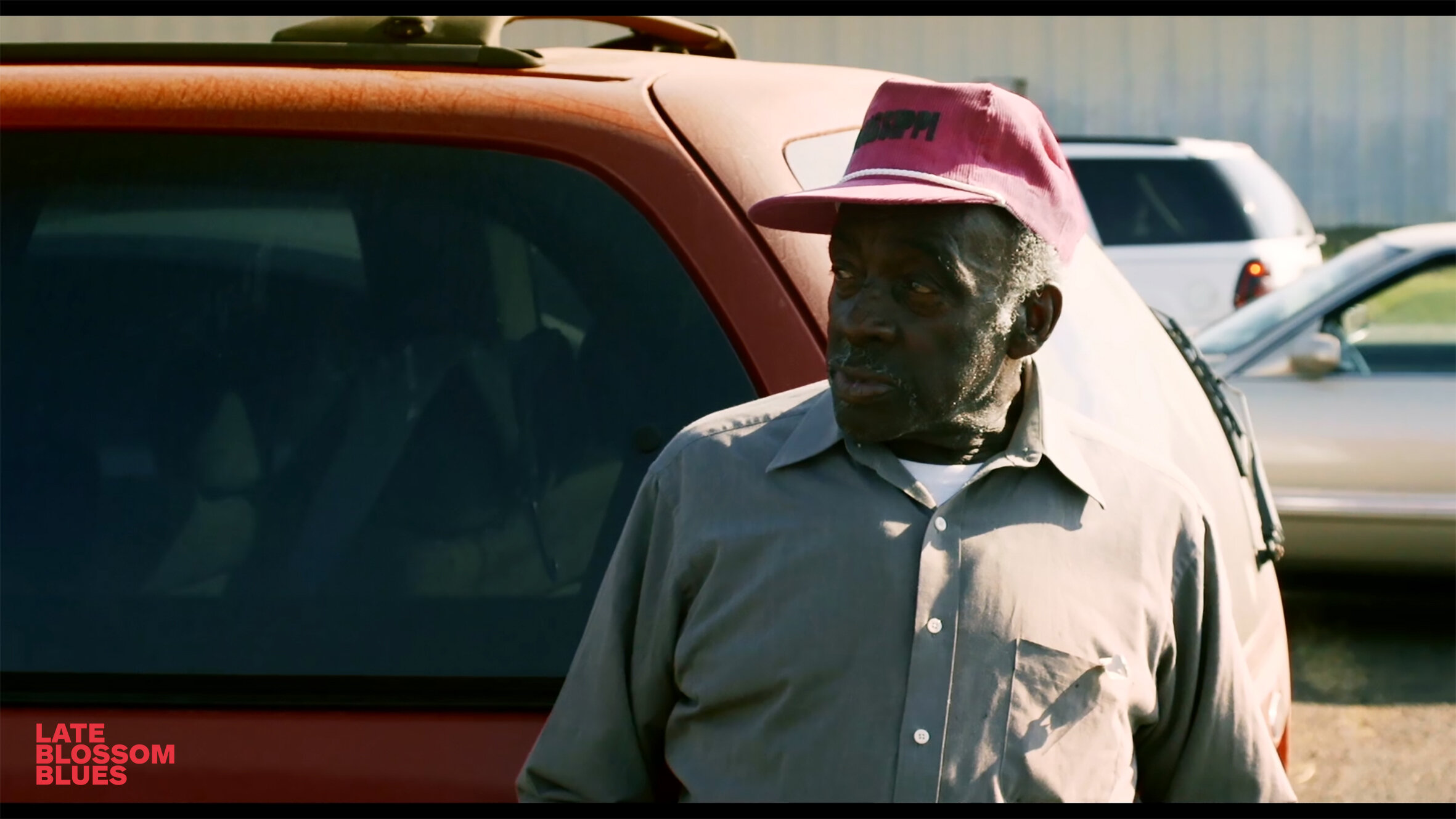


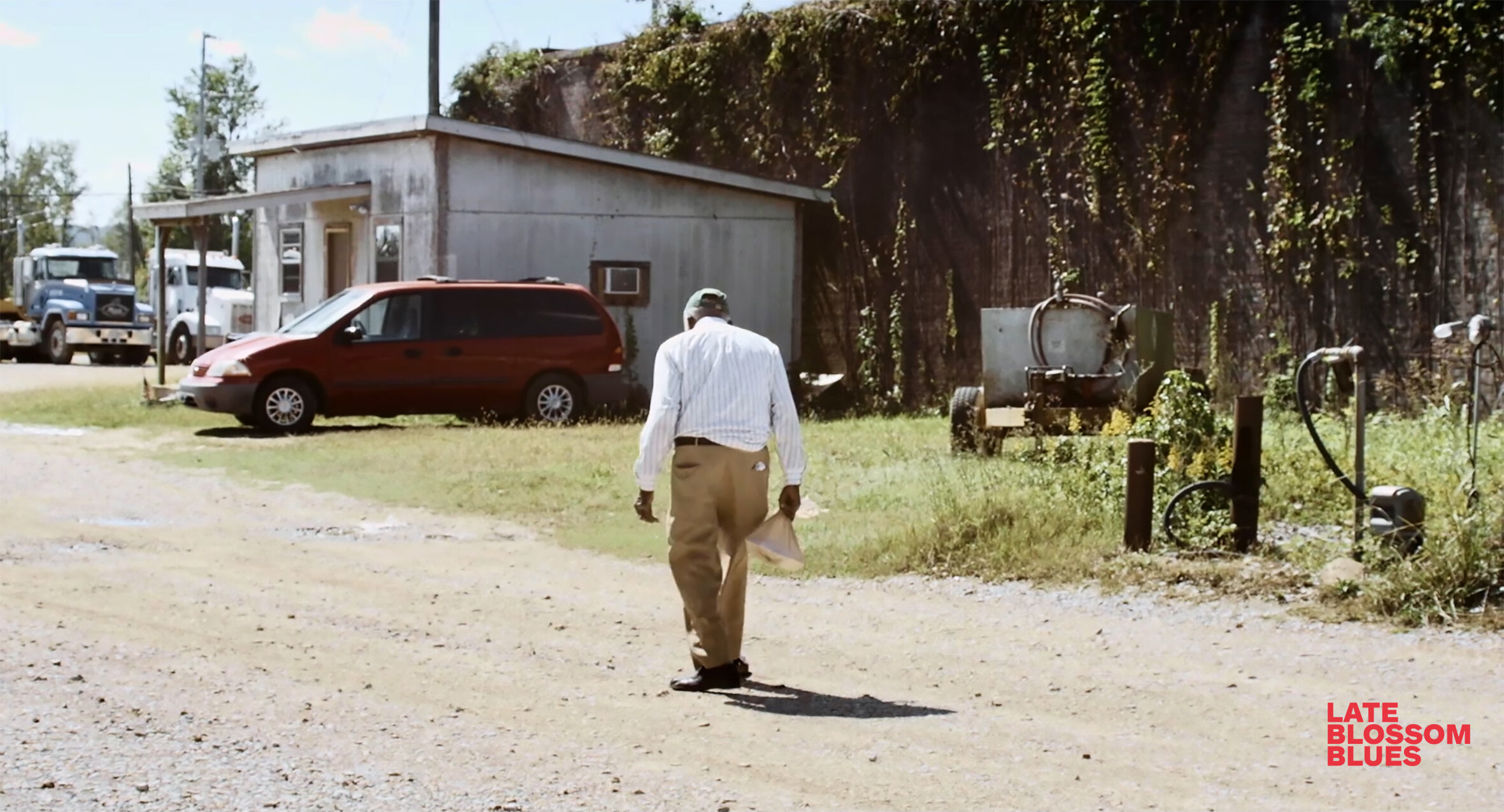
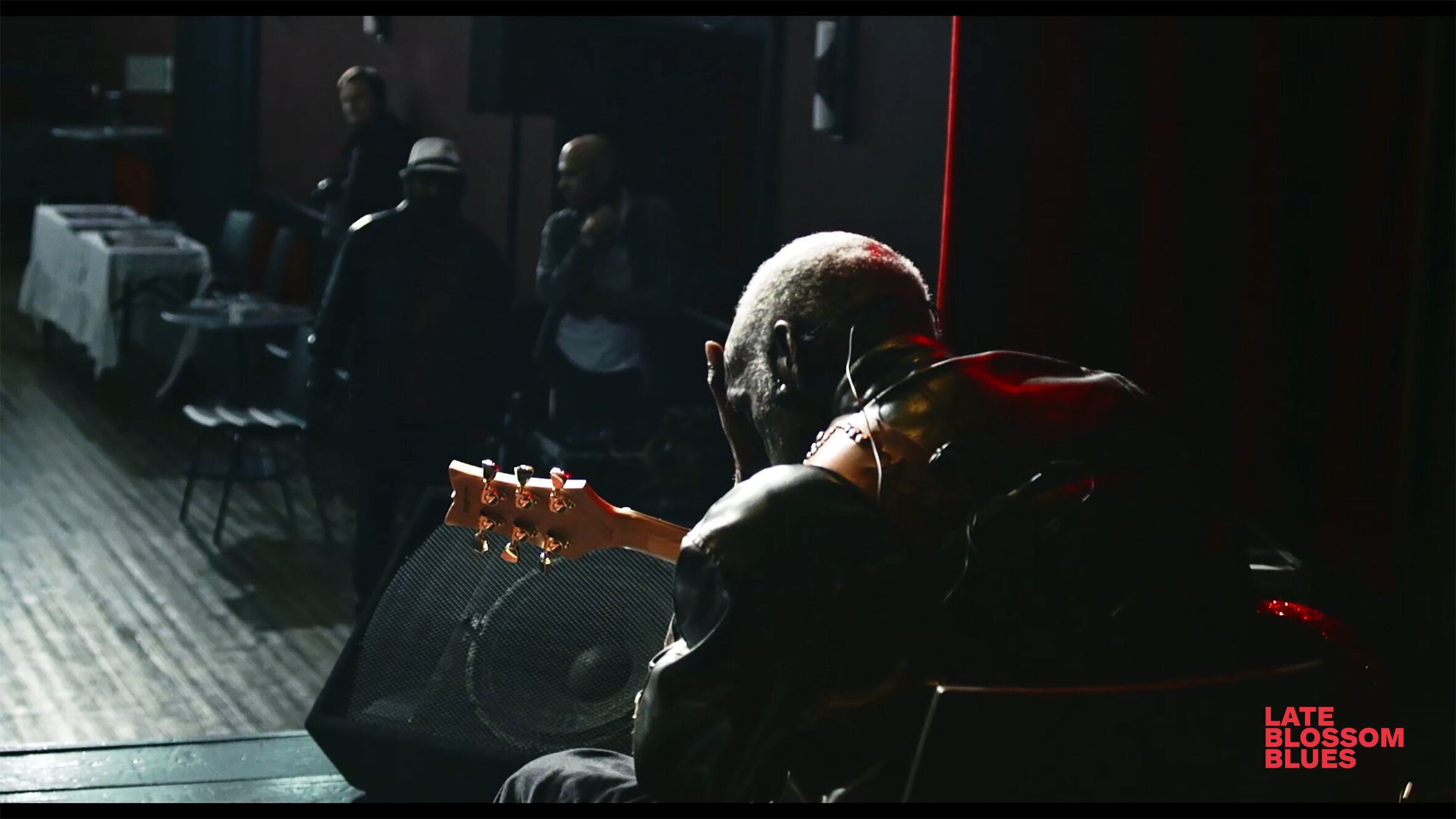
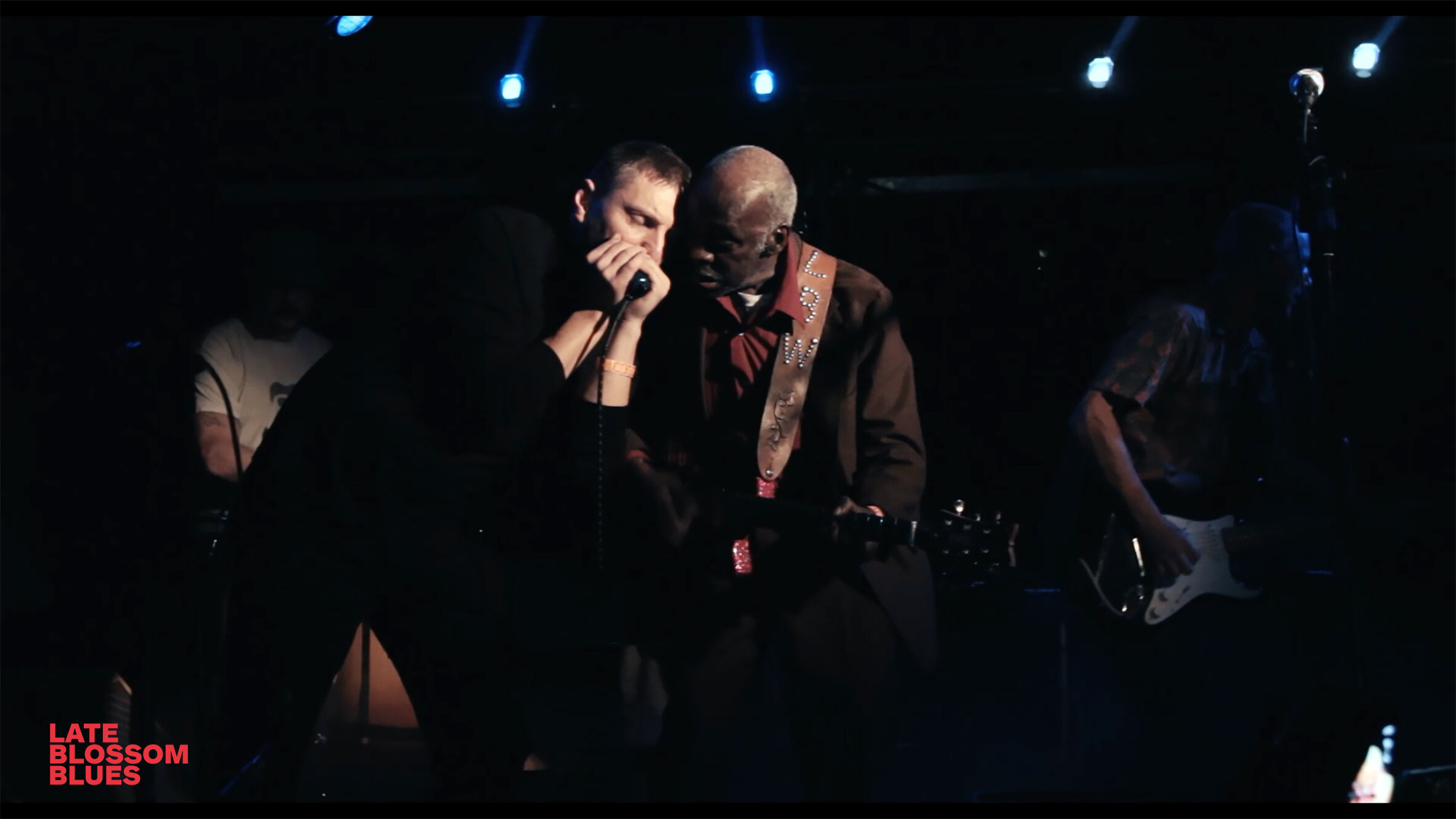
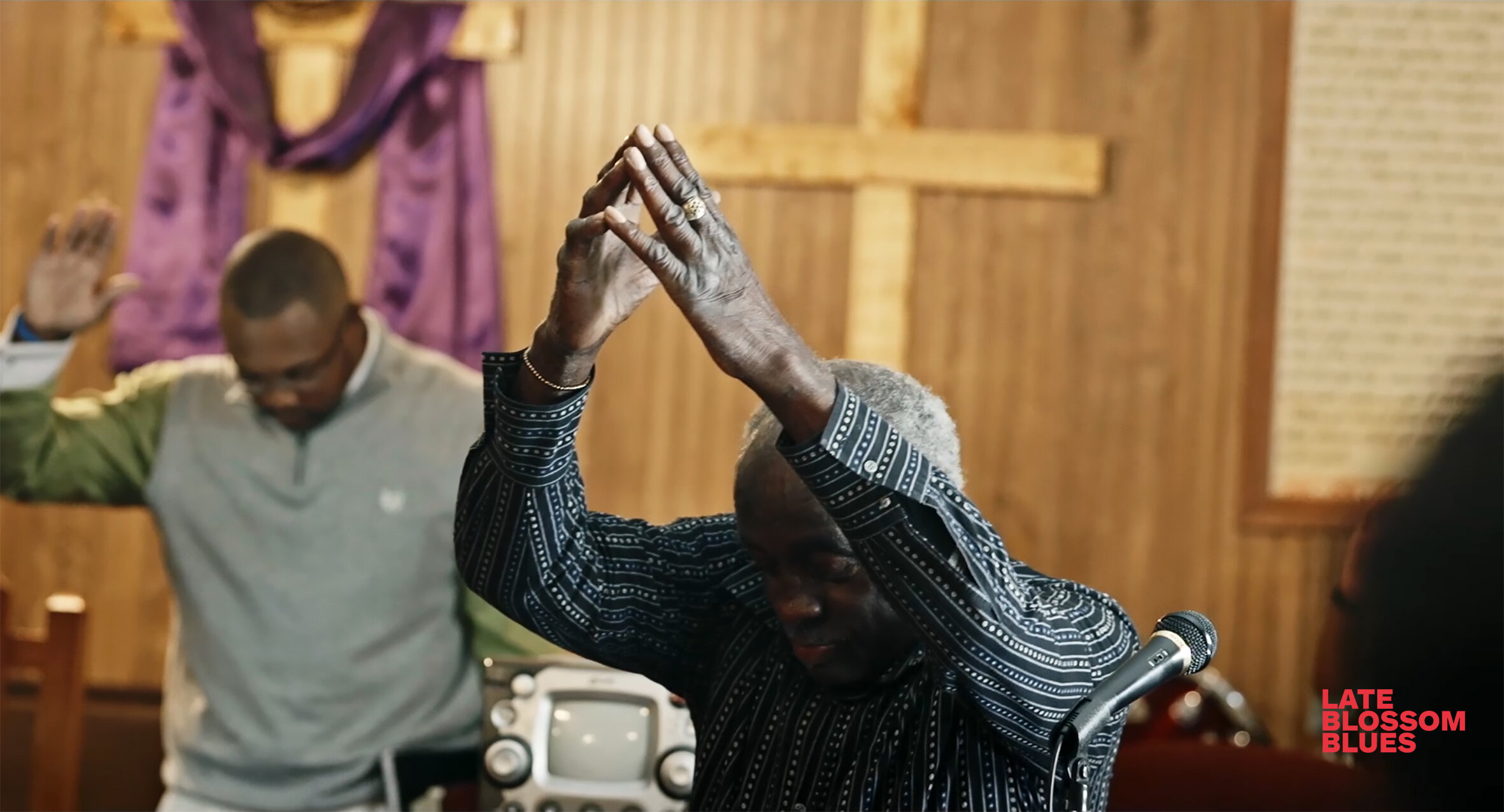
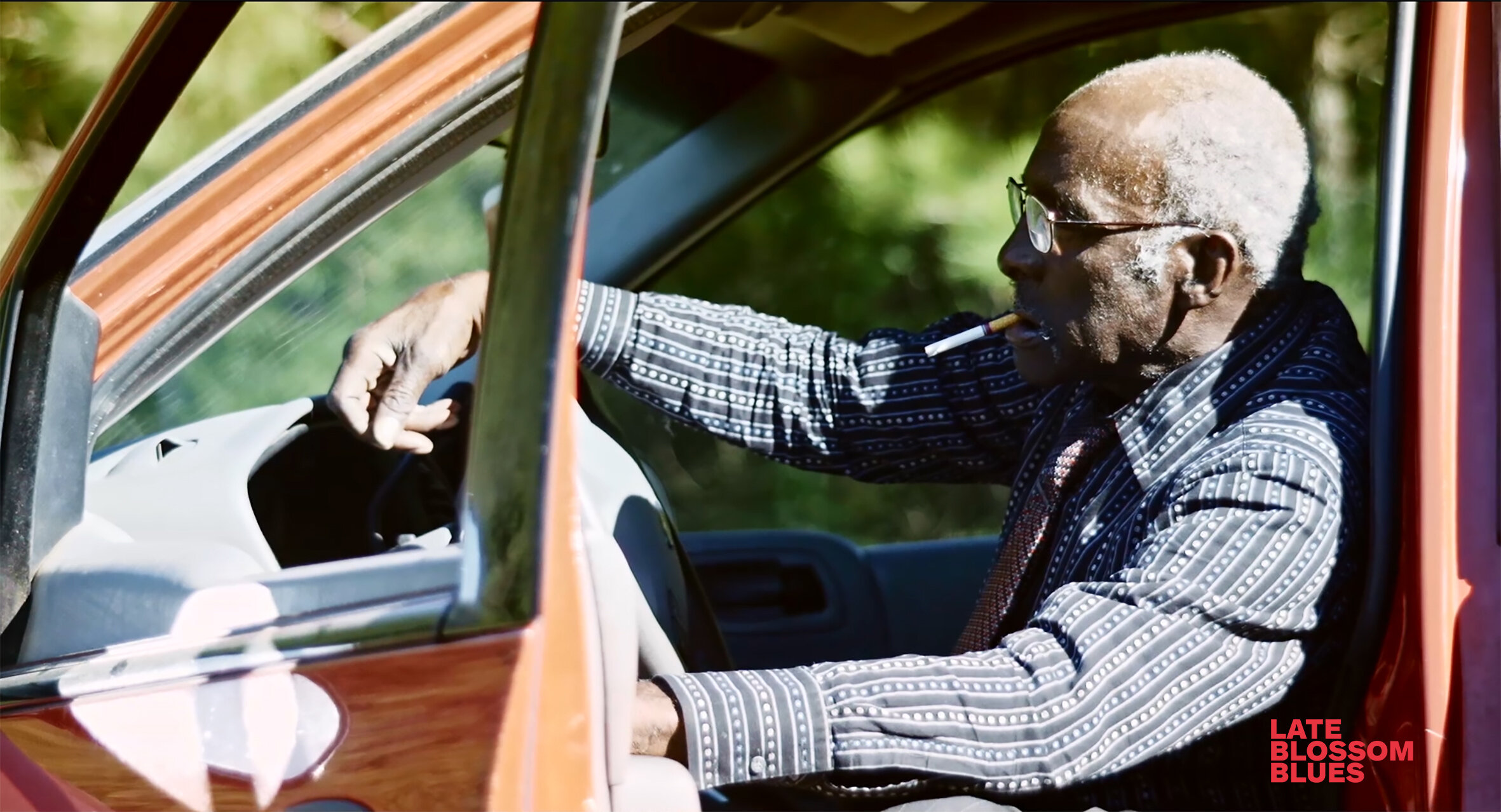
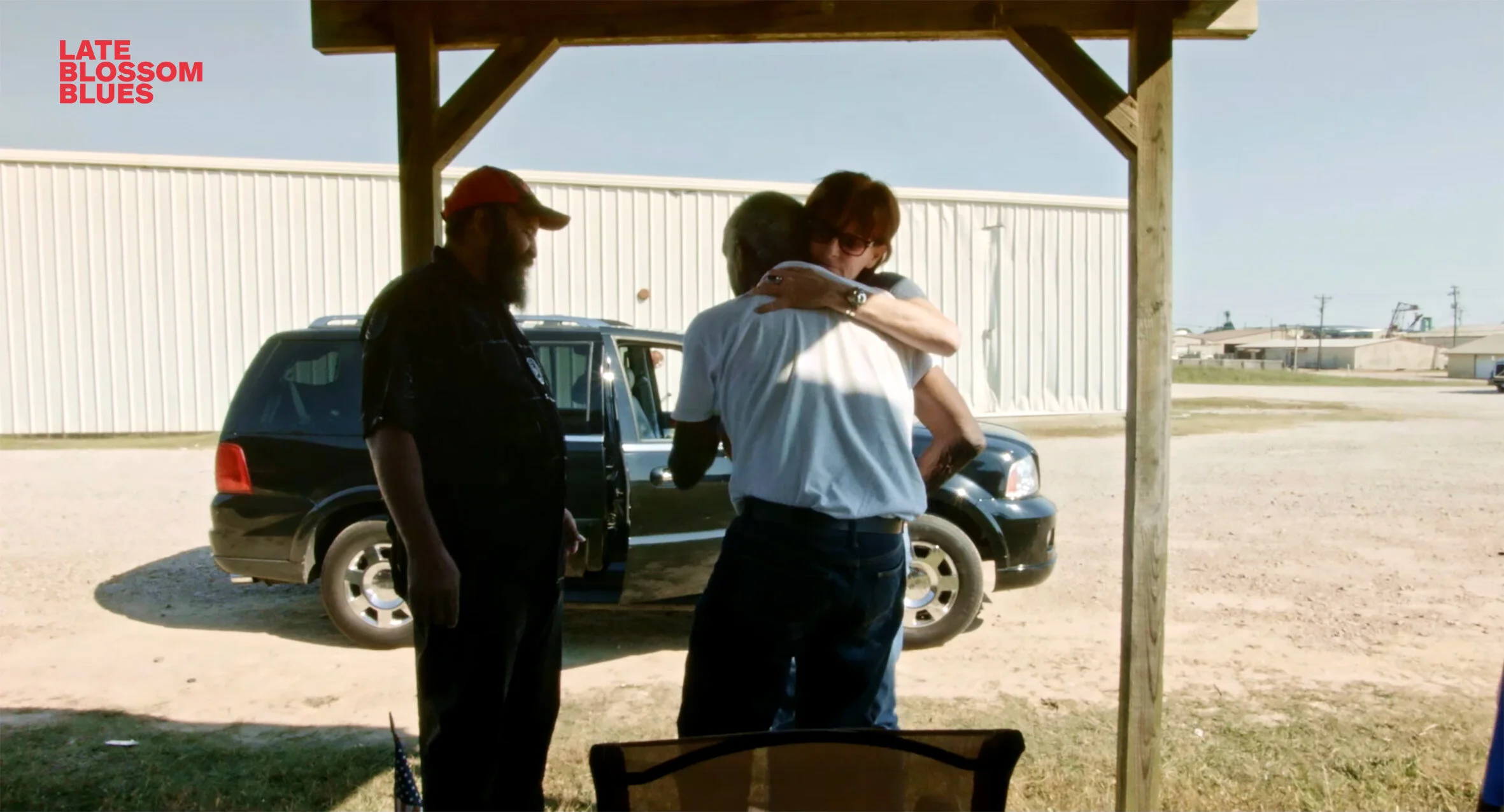
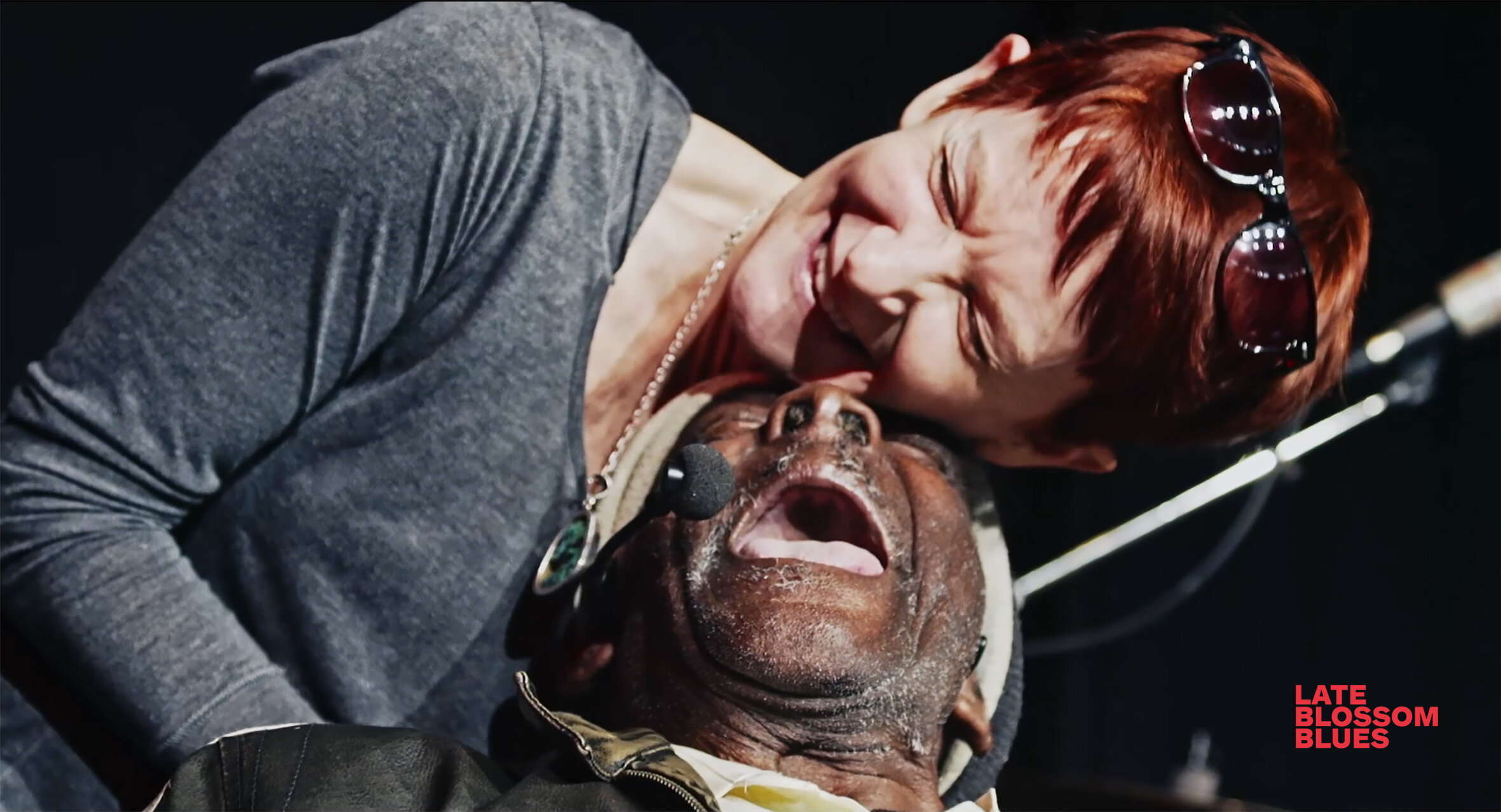
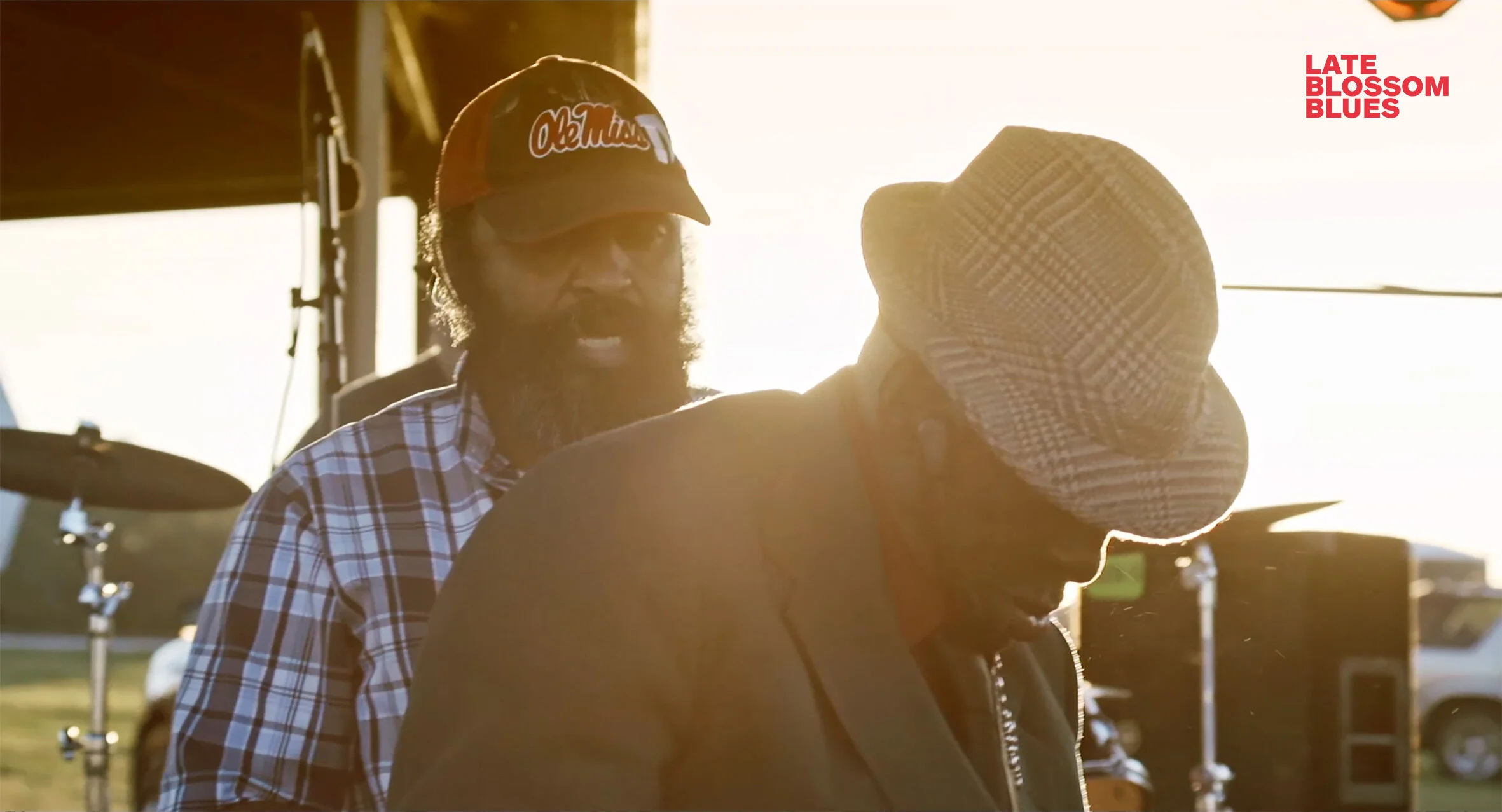
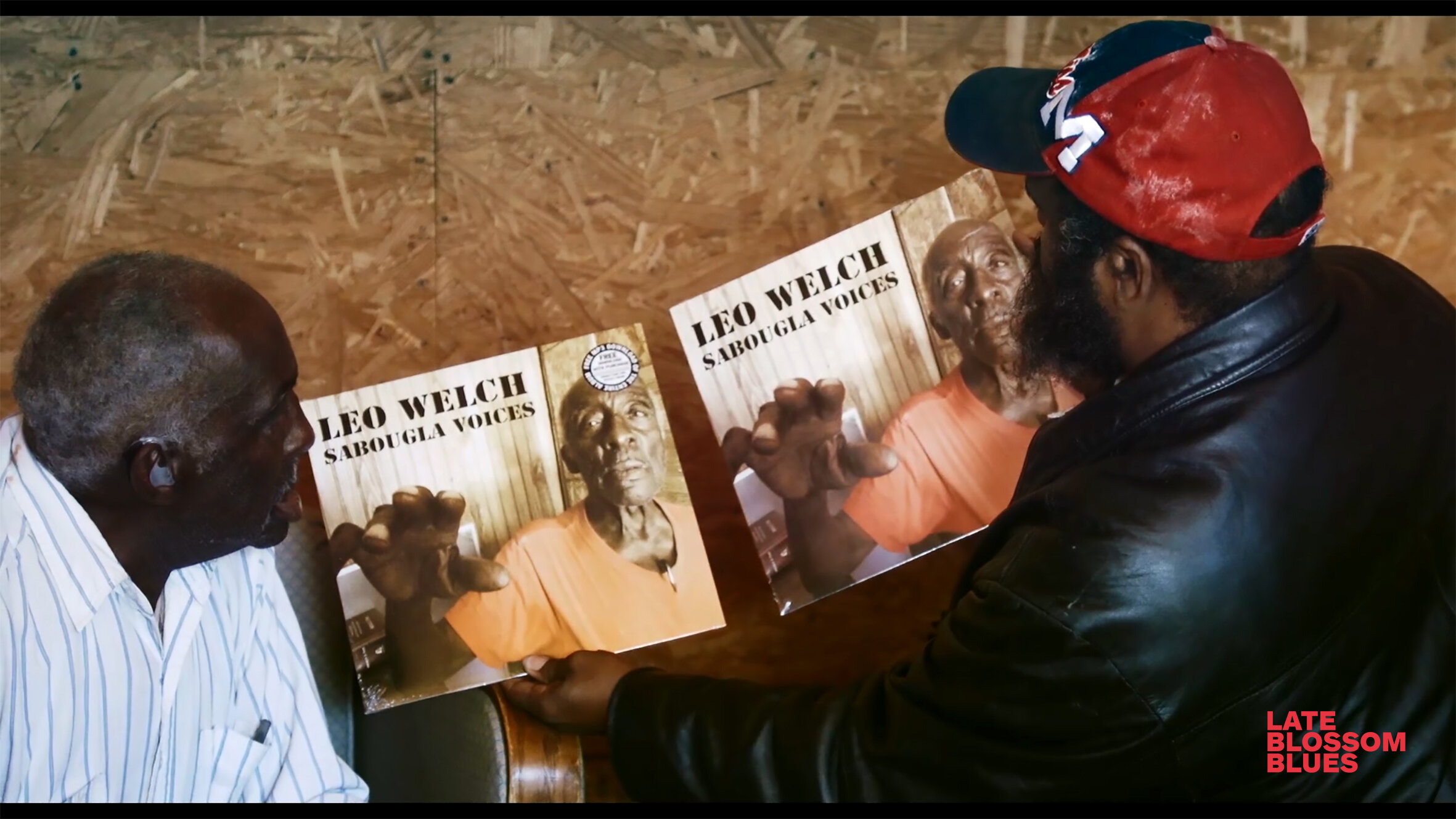
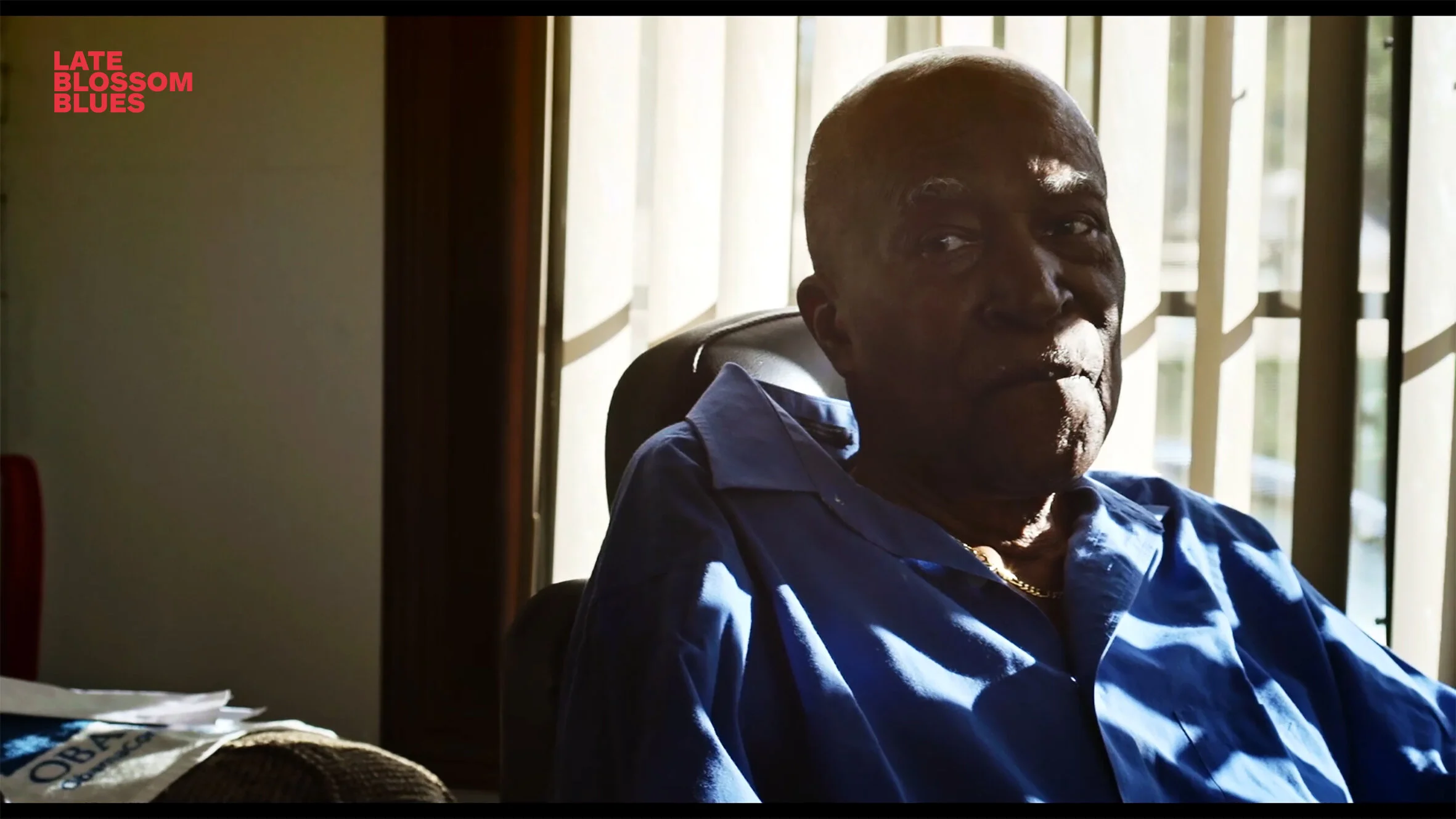
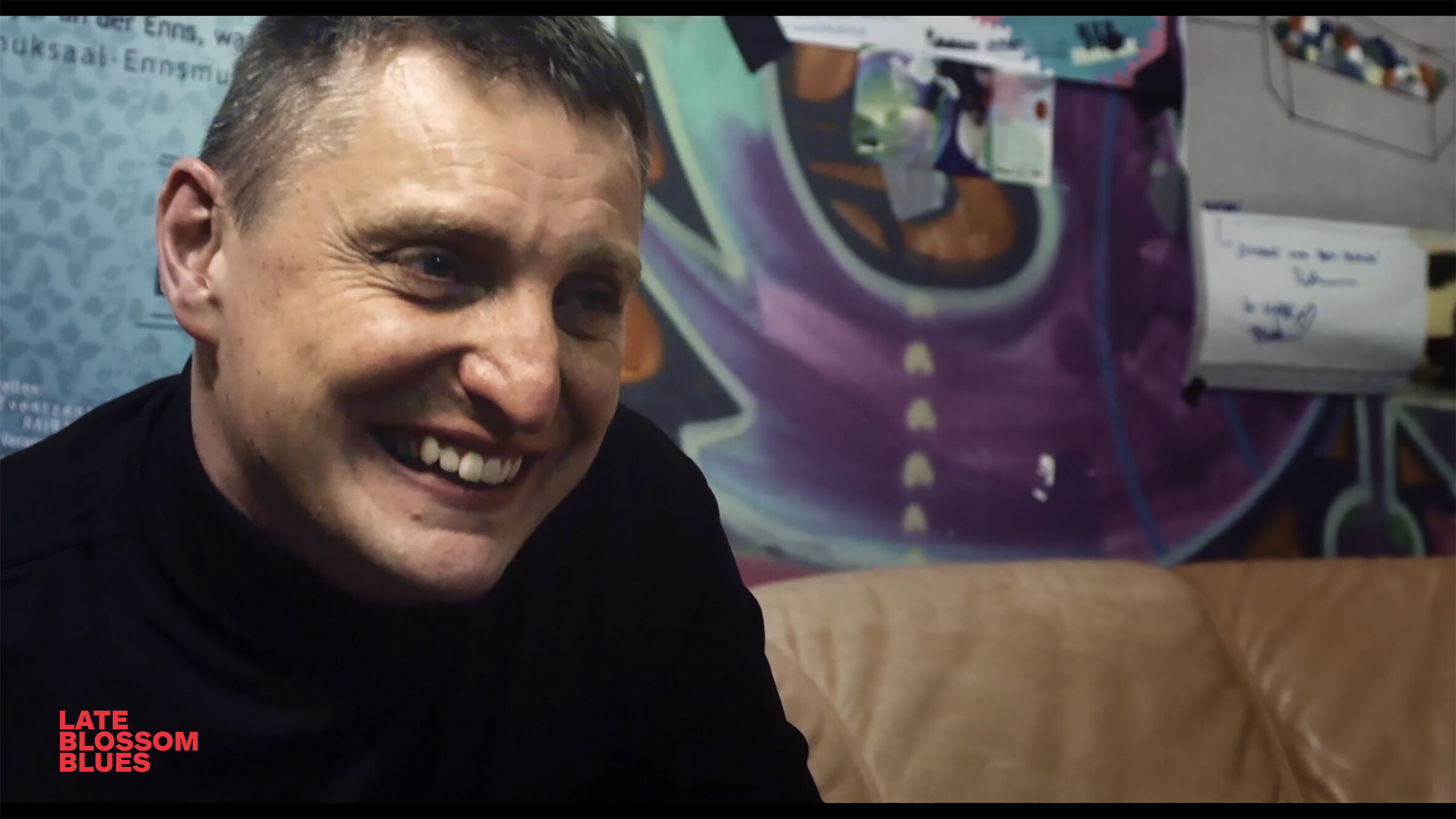
LETTERS TO PAUL MORRISSEY
LETTERS TO PAUL MORRISSEY Armand Rovira |Spain | 2018 | 78 min
SYNOPSIS
Drugs, vampirism, existential crises and melodies of another time mark the lives of several characters: a sex symbol of the underground cinema, two cursed lovers, a man seeking his salvation, an unsuccessful actress and a Japanese with a mysterious illness. Five stories, apparently not related to each other, that have a curious relationship with each other: Paul Morrissey, collaborator of Andy Warhol's Factory.
Director
Armand Rovira, Barcelona (1979), combines his work as director and screenwriter with cinematographic teaching in the Master University Frame that is taught at the Lens school in Madrid. LETTERS TO PAUL MORRISSEY has been his debut in the world of feature films. His experimental works have been recognized at prestigious festivals such as the fantastic Festival of Sitges, Karlovy Vary, BAFICI, European Film Festival of Seville, La Rochelle Cinema, Fantasia Film Festival, FICG, PÖFF – Tallinn Black Nights.
SYNOPSIS
Narkotika, vampirisme, eksistensielle kriser og melodier fra en annen tid markerer livet til flere karakterer: et sexsymbol fra underground-cinema, to elskere med forbannelse, en mann som søker sin frelse, en mislykket skuespillerinne og en japaner med en mystisk sykdom. Fem historier, tilsynelatende ikke relatert til hverandre, som har et nysgjerrig forhold til hverandre: Paul Morrissey, samarbeidspartner i Andy Warhol's Factory.
REGISSØR
Armand Rovira, Barcelona (1979), kombinerer sitt arbeid som regissør og manusforfatter med å undervise kinematografi ved Lens-skolen i Madrid. LETTERS TO PAUL MORRISSEY er hans debut i spillefilmens verden. Hans eksperimentelle arbeider er blitt anerkjent på prestisjefylte festivaler som den fantastiske festivalen i Sitges, Karlovy Vary, BAFICI, European Film Festival of Seville, La Rochelle Cinema, Fantasia Film Festival, FICG, PÖFF - Tallinn Black Nights.
DIRECTORS NOTE
When I was a teenager in the 90s I discovered a film that deeply marked me "Trash" (1970) directed by American Paul Morrissey, Paul was a member of Andy Warhol's Factory and his philosophy was to take his film camera to shoot freely in New York. He was the one who inspired me to join a small filming team during the summer of 2013. We recovered an old camera of 16mm and decided to use the negative we had acquired to shoot small stories. The possibility of working in black and white made us believe in the idea of creating something innovative and special. We looked for different emulsions with different expiration dates and we worked with them to do a film with images that had a lot of textures and shadows. The randomness of the process of the development was the key to our final result. Little by little these stories in black and White were growing and with the incorporation of the production company Dynamite films, they ended up becoming what today is Letters to Paul Morrissey.
The film pays tribute to Paul Morrissey and avant-garde cinema figure. With the idea of sending Paul Morrissey the little stories we were filming, I decided to call them 'film letters' to give them a narrative coherence. The brilliant skill of Saida Benzal as a scriptwriter was key to structure them: a letter for each main character. In one of them we were fortunate to have the presence of the legendary American actor Joe Dallesandro. He was one of the most famous male sex symbols of the underground cinema of the 60s and 70s and a whole homoerotic icon whose cult continues to this day. In the words of film director John Waters: “Joe was a wonderful actor who forever changed his sexuality male on the screen.” Working with him in this movie was quite an experience.
Reviews
... en film som prøver å fange deg i garnet sitt, og nekter å slippe deg løs. [...] Spørsmål er om akkurat denne filmen lykkes med det den prøver på, om den klarer å fylle seeren med sin stemning. Det gjør Letters to Paul Morrissey.
Yngve Sikko / Natt&Dag, Norway
Letters to Paul Morrissey är en löst hållen kärleksförklaring till den legendariske The Factory-regissören tillika Andy Warhols närmaste hand, men framför allt en vacker experimentfilm som odlar form och innehåll, inspirerat av verkligheten eller helt fritt diktat, på ett suggestivt sätt.
Jon Asp / Point of View, Sweden
Paul Morrissey was an integral part of Andy Warhol’s Factory scene. He managed the Velvet Underground and director of many iconic art films of the 60’s such as Trash and of course Chelsea Girls. Spanish directors Armand Rovira and S“Paul Morrissey was an integral part of Andy Warhol’s Factory scene. He managed the Velvet Underground and director of many iconic art films of the 60’s such as Trash and of course Chelsea Girls. Spanish directors Armand Rovira and Saida Benzal created a visually stimulating and provocative tribute to the Factory renaissance man, Letters to Paul Morrissey. The film is evocative of the style of Morrissey’s films. Shot in 16mm, and in black and white, Letters is an anthology film that is exactly what it says it is, a series of five letters to the iconic director.
Lorry Kikta / Film Threath , USA
It may seem strange to describe a film like this as “fun”, and yet that’s precisely what it is, with philosophical questions smoothly interwoven with loving throwbacks to Warhol and Morrissey’s biggest hit, Chelsea Girls, and discussions about the importance of eyeliner. Or even a shark, stuck in an aquarium and keeping the secrets of its visitors. With Françoise Hardy singing in the background and Gloria Swanson going full, red-lipsticked diva in Sunset Boulevard once again, playing here on a loop, it might be one of this critic’s favourite black-and-white movies of the year.
Marta Balaga / Cineurapa
A little gem destined to be one of those films that show us that, yes, dear Morrissey, another cinema is possible.
Mireia Mullor / Fotogramas, Spain
Armand Rovira offers us an exquisite visual compilation of some of the themes and aesthetics that marked the undisputed stamp of the author trash par excellence.
Filmin, Spain
My 5 top experimental narratives/crossovers of 2018: 1. "Letters to Paul Morrissey"….
Pawel Wieszczecinski / Kinoscope
Letters to Paul Morrissey captures the viewer and immerses them in a suggestive and strange torrent that takes them to a territory in which art and creation, in their search for new forms and manifestations, can perhaps cure some of our ills… Armand Rovira knows how to lead us on this journey with a spirit, a security and a completely commendable and fully suggestive visual sense.
Cine Arte Magazine, Spain
PRESSBOOK
Download
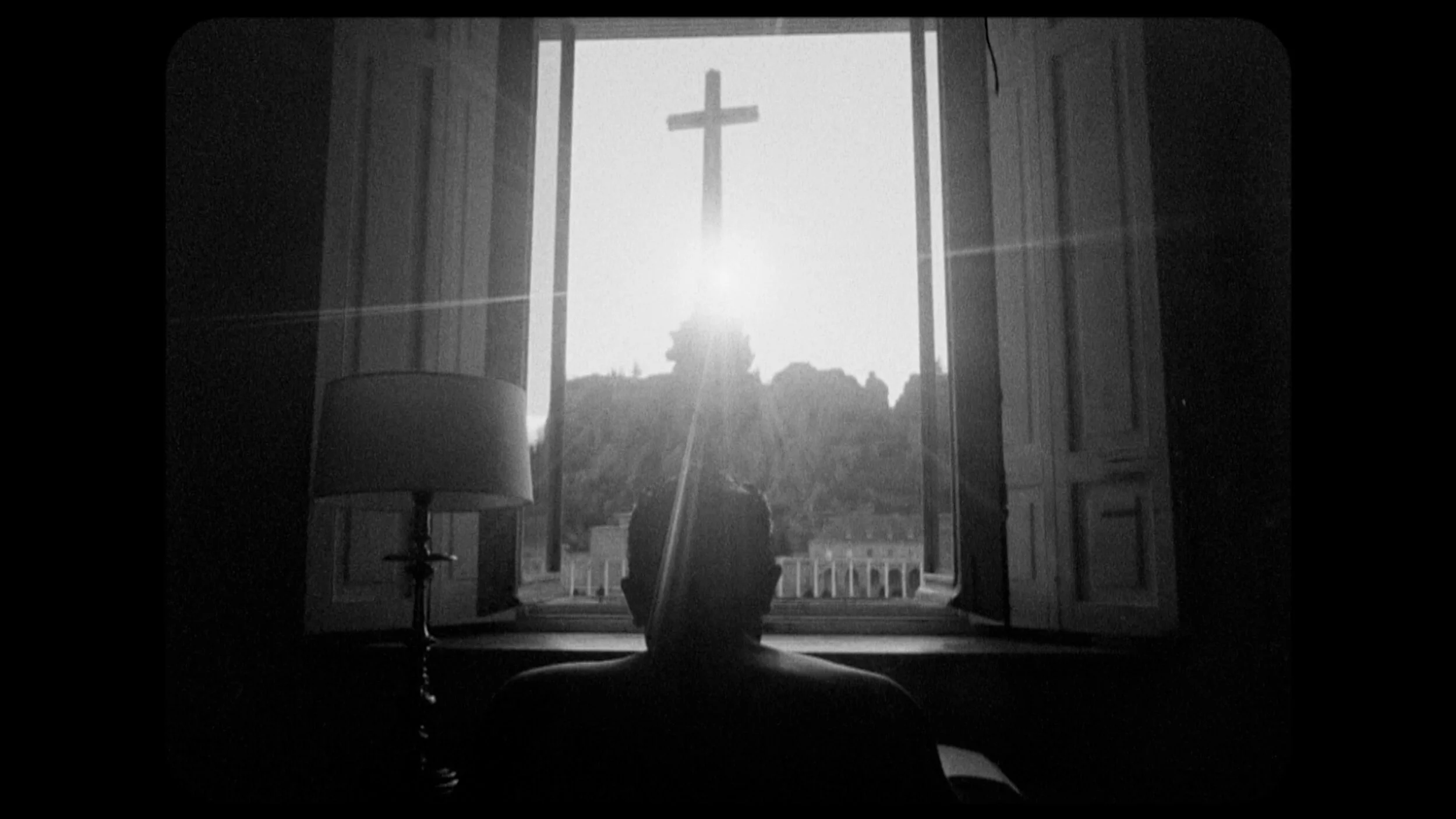
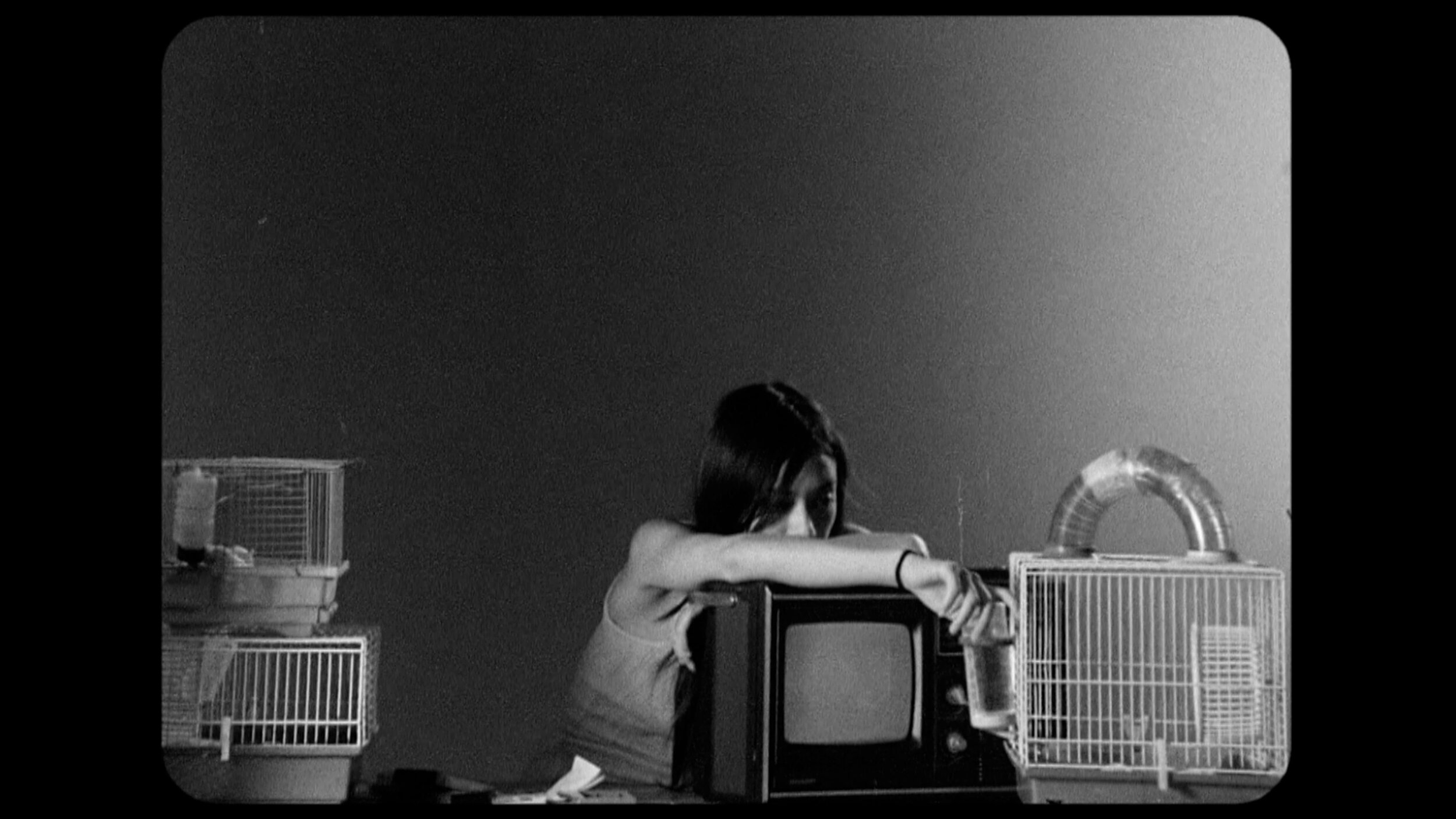
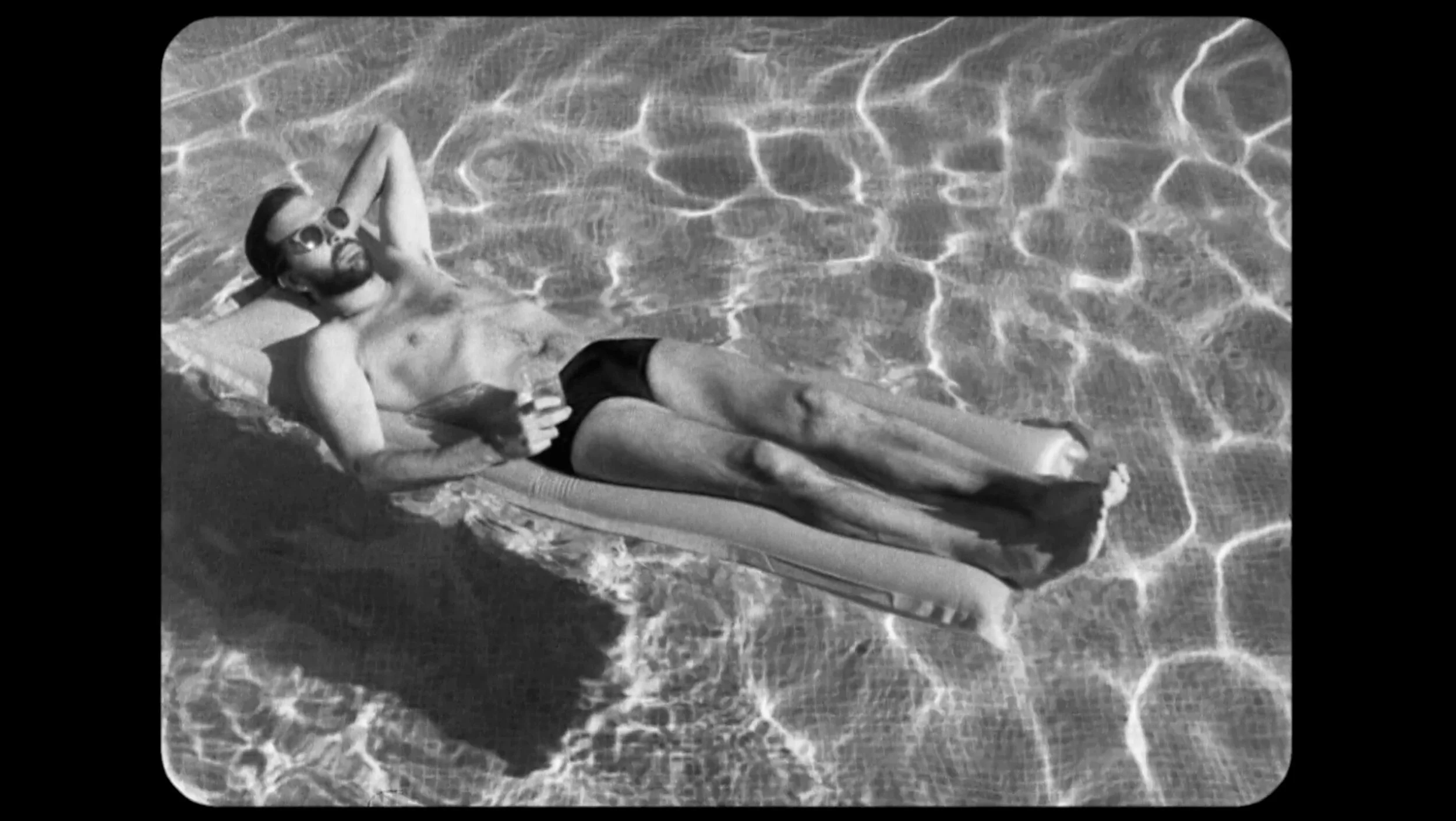
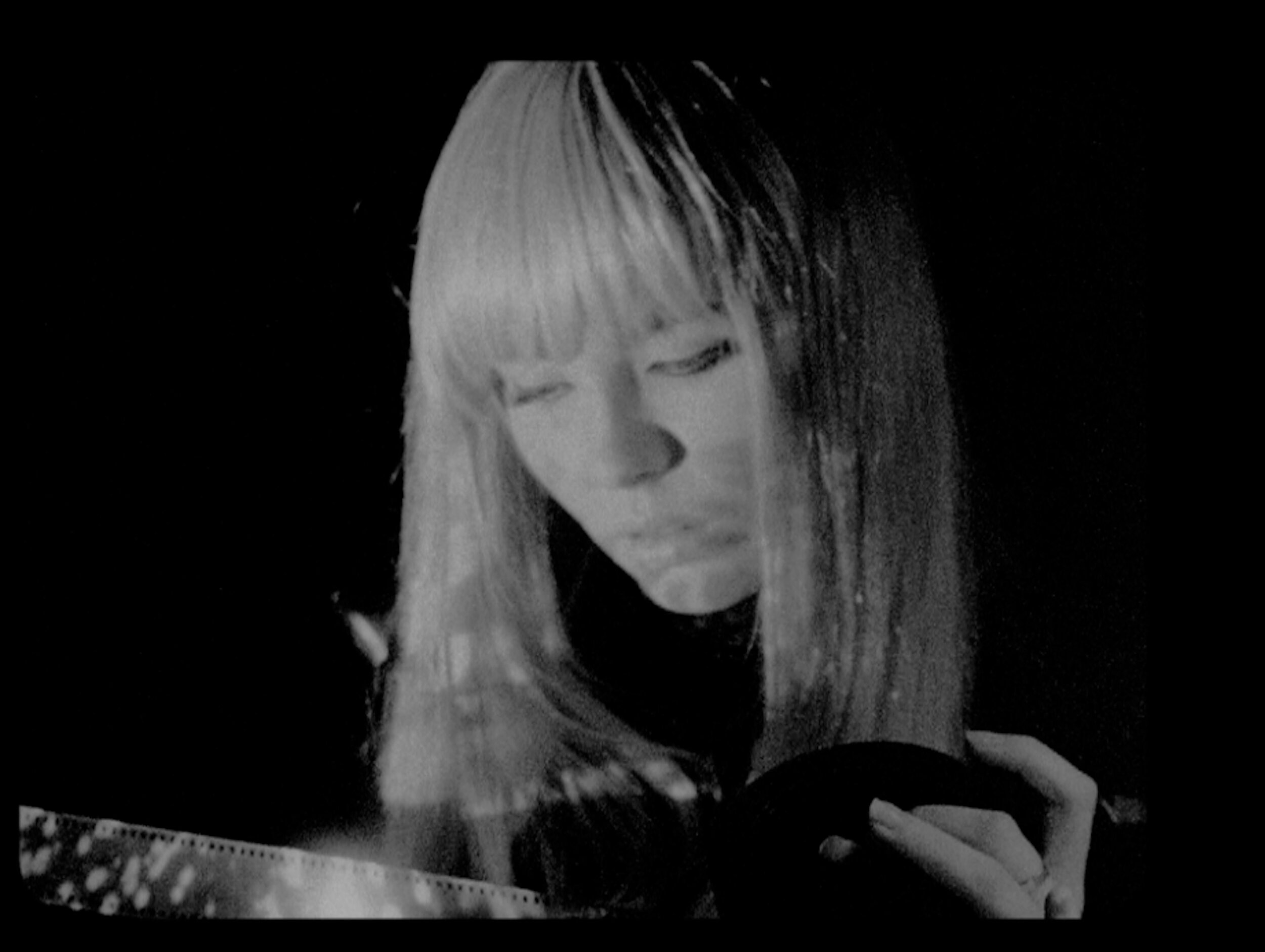
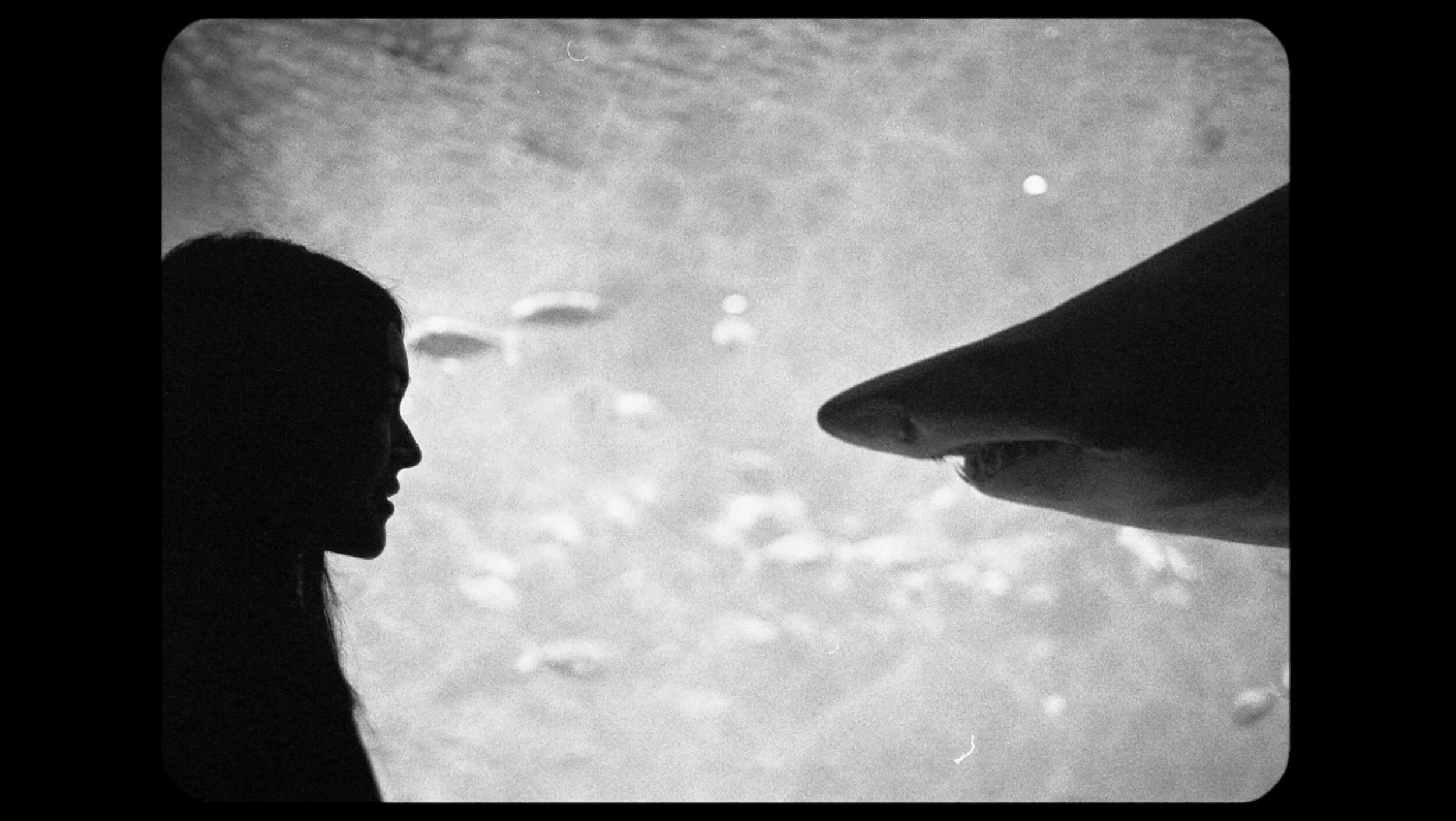
LETTERS TO PAUL MORRISSEY
Running time: 78 min
Genre: Drama, Experimental
Languages: English, German and Japanese
Subtitles: English (Norsk kommer snart)
Country/Year: Spain/2018
Shooting Format/Color: 16mm/black and white
Format: Digital 2k, Dolby 5.1.
Cast ALMAR G. SATO, XAVI SÁEZ, MARIA FAJULA, JOE DALLESANDRO, SAIDA BENZAL, AGNÈS LLOBET, ANDREA CARBALLO and ESTEVE TORRES
Director ARMAND ROVIRA / Director “Letter 4” SAIDA BENZAL
Screenplay ARMAND ROVIRA and SAIDA BENZAL
Producer MINTXO DÍAZ, JORGE VIDAL, ARMAND ROVIRA, YAYO HERRERO
Executive Producers MINTXO DÍAZ, JORGE VIDAL
Cinematography EDU BIURRUN / Camera JESÚS PONCE
Editing ARMAND ROVIRA
Sound JESUS LLATA / Music THE YOUTH
DYNAMITE FILMS, FROM OUTER SPACE
Territories: Norway, Sweden
Format: DCP
CAIRO JAZZMAN
cairo jazzman | Atef Ben Bouzid | germany 2017 | 82 min
synopsis
“Jazz is more than just a style of music”, says Amr Salah. “It’s about freedom.” Salah, a jazz pianist, is an enthusiastic promoter of the genre. Every year he organises the Cairo Jazz Festival, but doesn’t view himself as a festival director: He is first and foremost a musician and fan. In this music documentary, people close to Salah such as his fellow musicians and proud parents discuss his passion. In Egypt, jazz attracts a conspicuously young audience, emphasising the chasm between them and the older generation who rule the country. The authorities therefore provide almost no support to Salah’s jazz festival. The film follows him during the run-up to the festival and various major and minor problems crop up. “Egypt is full of surprises”, he observes when one of the locations suddenly becomes unavailable mere days before the festival. Luckily, as a jazz musician he is good at improvising.
synopsis
«Jazz er mer enn bare en stil innen musikk», sier Amr Salah. « det handler om frihet». Salah, en jazzpianist, er en entusiatisk promotør for sjangeren. Hvert år arrangerer han Kairo Jazz festival, men han anser ikke seg selv som festivalens direktør. Han er først og fremst en musiker og fan. I denne musikkdokumentaren møter vi folk som står Salah nær, som hans musikkkolleager og stolte foreldre, som diskuterer hans lidenskap. I Egypt tiltrekker jazz et yngre publikum som legger vekt på kløften mellom de og den eldre generasjonen som styrer landet. Derfor får festivalen nesten ingen støtte av den egyptiske regjeringen. Filmen følger ham i forberedelsene til festivalen og flere større og mindre problemer hoper seg opp. « Egypt er full av overraskelser». uttaler han da en av konsertstedene plutselig blir utilgjengelig et par dager før festivalen åpner. Heldigvis er han, som jazzmusiker, god til å improvisere.
Director
Atef Ben Bouzid is a German journalist, director, and producer from Berlin, worked for national and international media outlets and specialized in the fields of sports, music, and society. Speaking five languages, he spent lengthy periods of time in Cairo, Tokyo, and New York City, and is especially interested in the many aspects of human interaction and communication across cultures and countries. Most recently Atef Ben Bouzid directed and produced the feature documentary CAIRO JAZZMAN.
DIRECTORS NOTE
Music is the universal language, the element connecting human beings, regardless where they are from. It’s the perfect tool to provide a new perspective, to broaden our horizons. That’s the goal of "Cairo Jazzman." I arrived in Cairo for the first time in 2002. I was almost overwhelmed by this city, its energy, vibrancy, and its chaos. I was spellbound by this unique metropolis and the amazing and decent people who live there. Cairo is not an easy place. It is challenging, special, unique.
In our globalized world the pace of our lives is accelerating and we are in danger of drowning in the onslaught of mass and social media. There seems to be no time anymore for thoughtful considerations, for asking the right questions and looking for reasoned answers. This is why we are thirsting for stories about individuals who stop us in our tracks, who are remarkable because of who they are and what they do, who make a difference and who overcome obstacles against all odds. It was in Cairo, that I found such an individual.
So it was an easy decision to document the courageous project of a passionate Egyptian determined to make Jazz accessible, to pass it to the next generation. Despite lacking any funding this was a story that needed to be told. Officials have tight control over filming in public so despite persisting it was still a great surprise to receive an exceedingly rare permission to do so, especially for a non-Egyptian. This documentary is an example of what's possible if we are only passionate enough to do what we believe in.
A filmmaker is nothing without his or her subject and the team. I was fortunate to have met the right people to realize the dream of making this documentary.
Reviews/PRESS
The film includes breathtaking footage of Cairo, interviews from international artists that were invited for the festival and even Salah’s parents make an appearance. Worth noting also is the fact that this documentary entirely self-funded and independent, which posed an obstacle when it came to obtaining filming permits. But like the Cairo Jazz Festival itself, it prevailed through most difficulties presented to it. Fady Adel, Cairo Scene, Egypt
Atif Ben Bouzid's film about the Cairo Jazz Festival gives unusual and multi-layered insights into the life of civil society in the megacity of Cairo, embedded in jazz as a universal language that unites people and expands horizons. Jazzinstitut Darmstadt
In this dramaturgically clever and tasteful documentary, Cairo appears like another protagonist - sophisticated, downright groovy interlocked with the atmospherically appropriate music. With CAIRO JAZZMAN, director and producer Atef Ben Bouzid has made a remarkable debut. Katrin Wilke / Taz, Germany
Look where prejudices block your view and listen to the wonderful Arab and non-Arab musicians who ultimately play at the festival. Ulrich Stock, Die Zeit, Germany
An Interview with filmmakers/producers Atef Ben Bouzid and Sebastian Leitner.
The National Newspaper: Documentary Cairo Jazzman traces Egyptian composer Amr Salah’s musical journey.
PRESSkit
Download
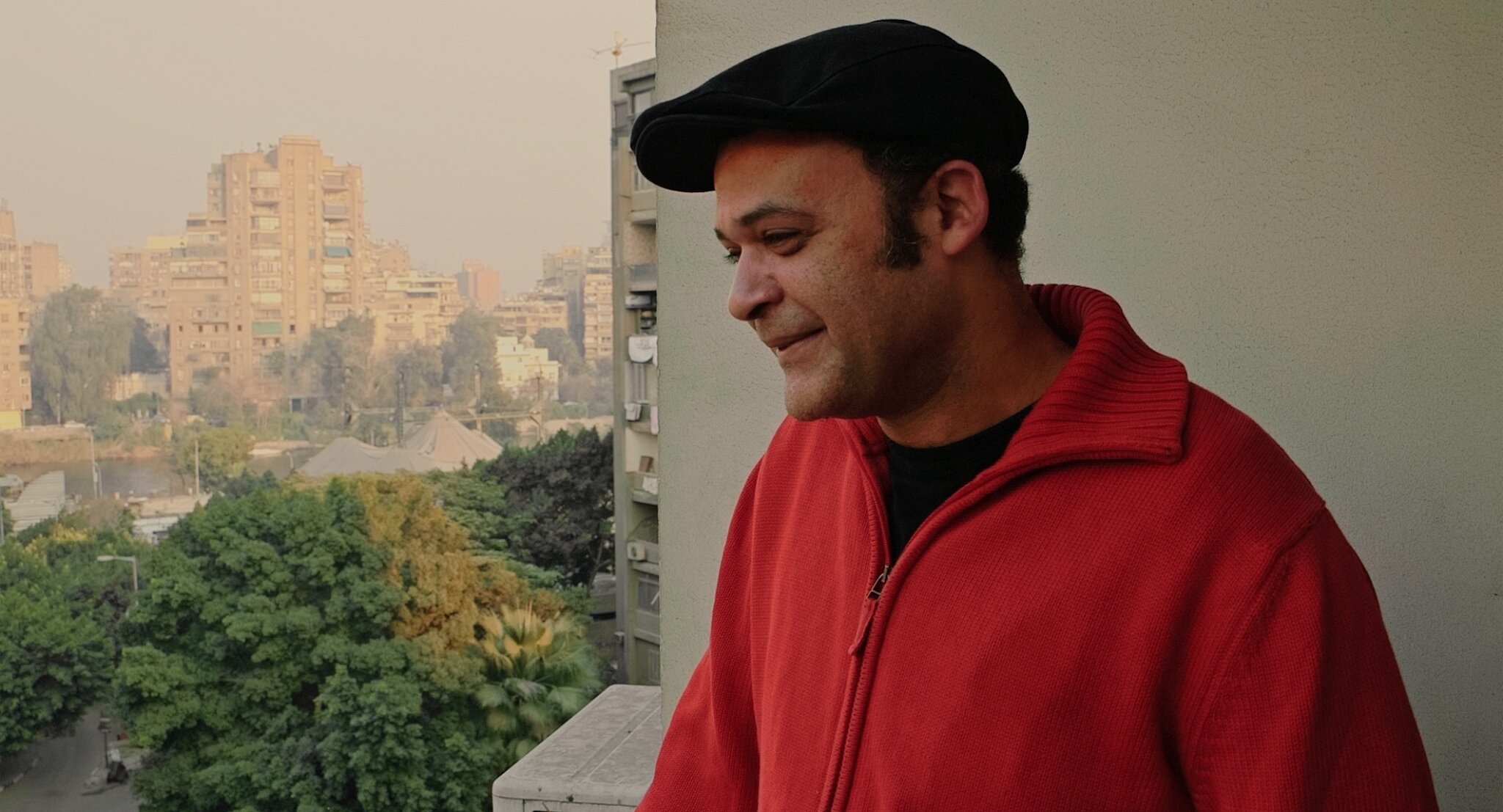
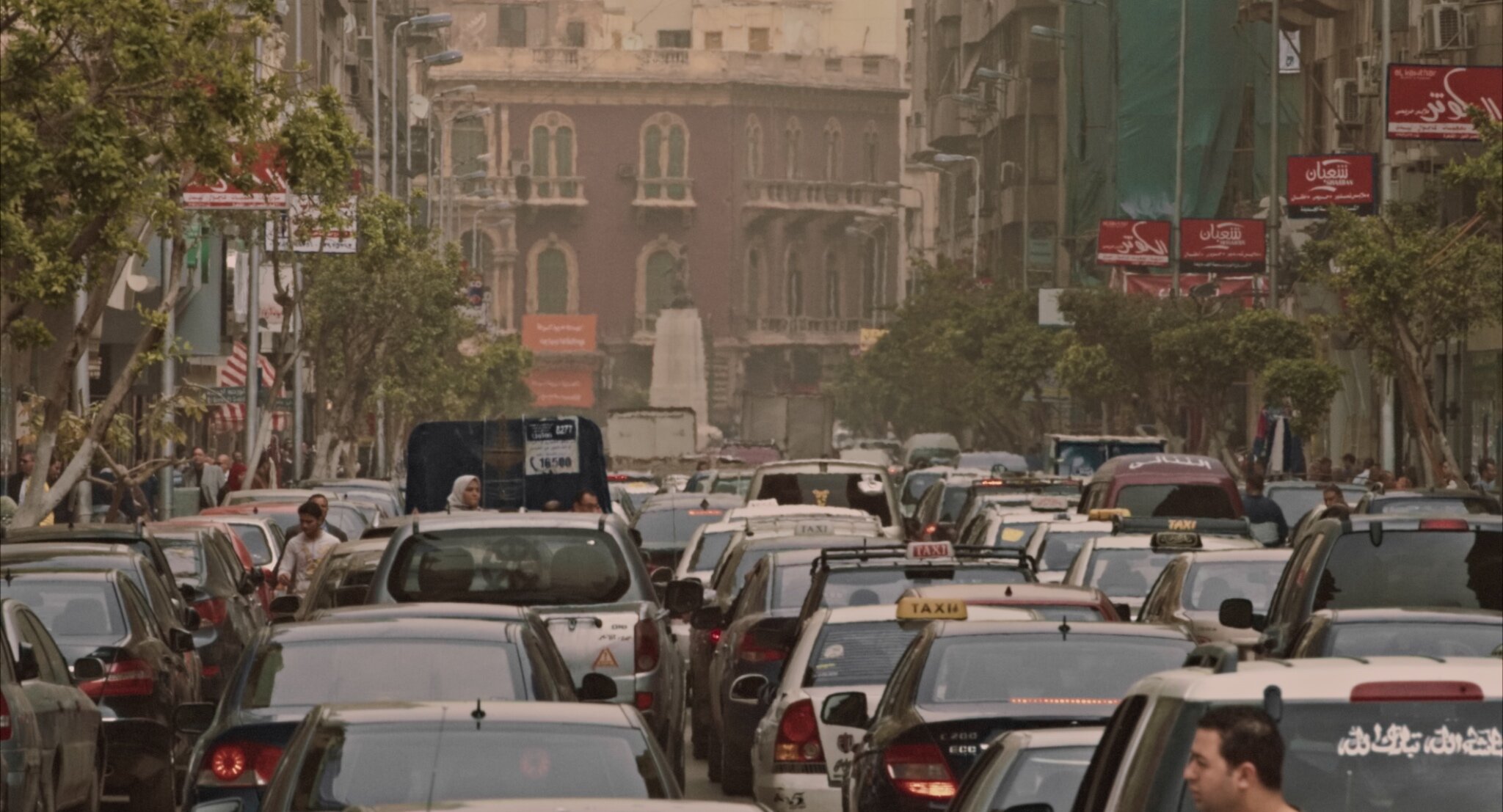

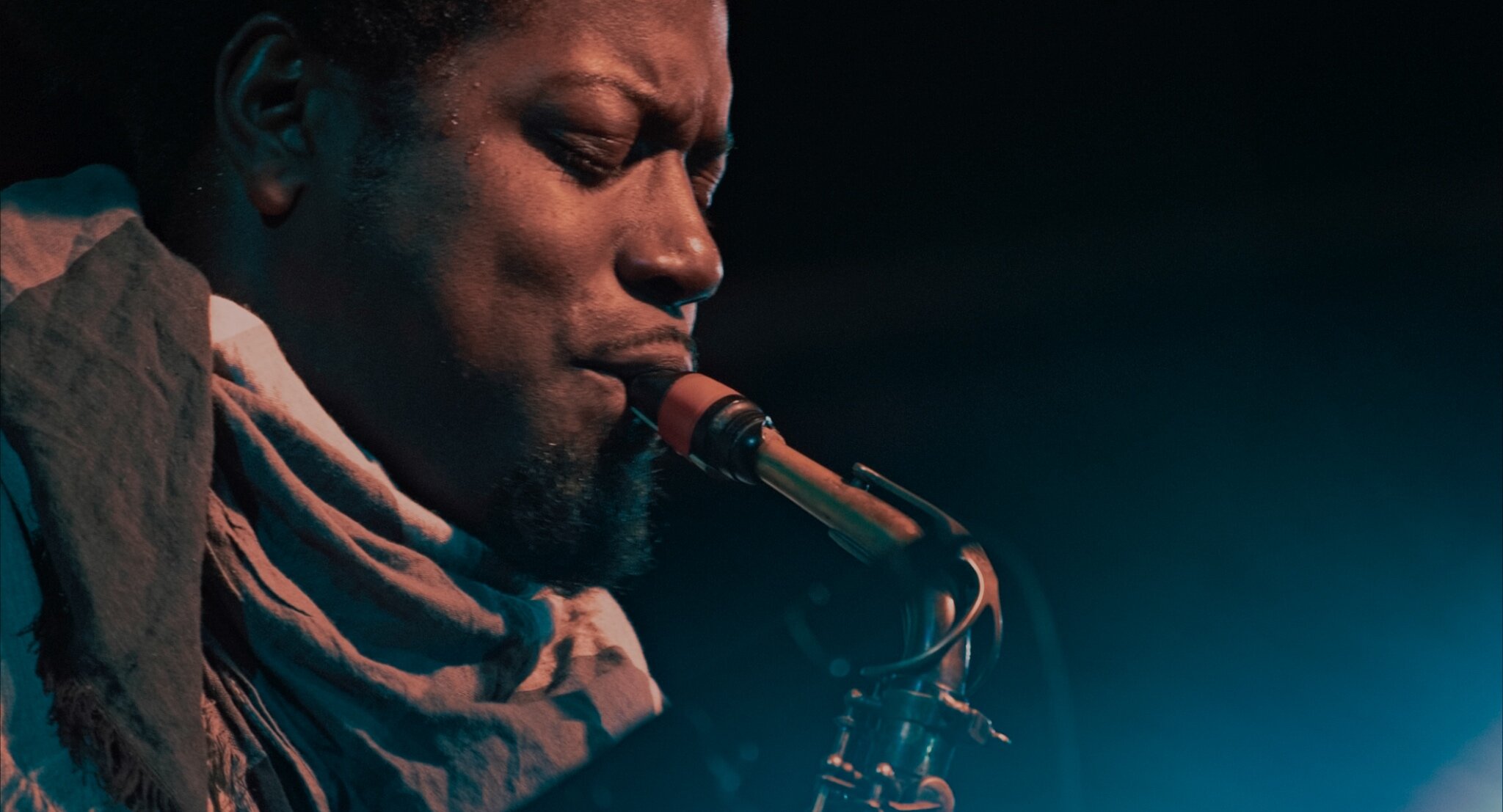
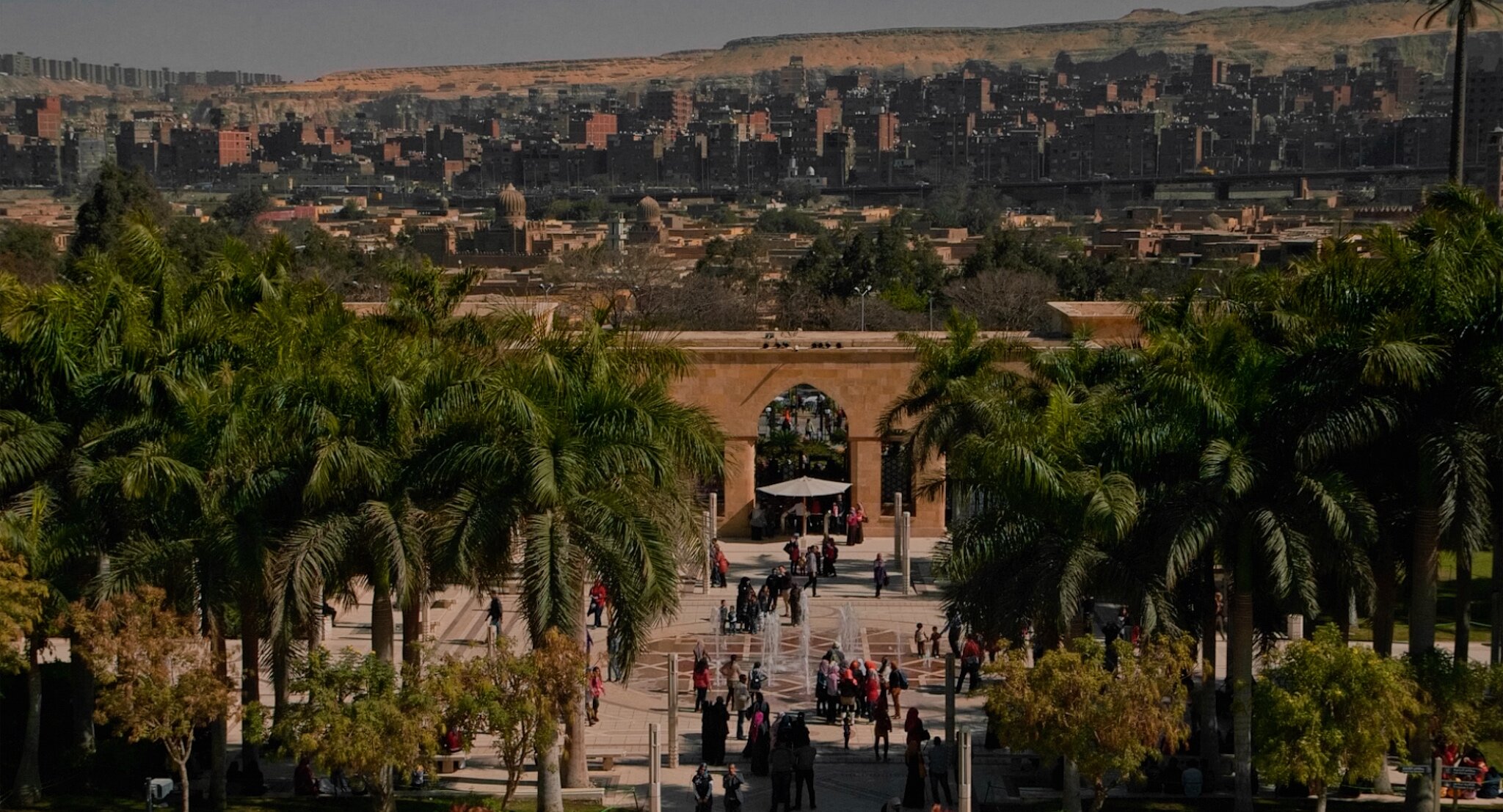
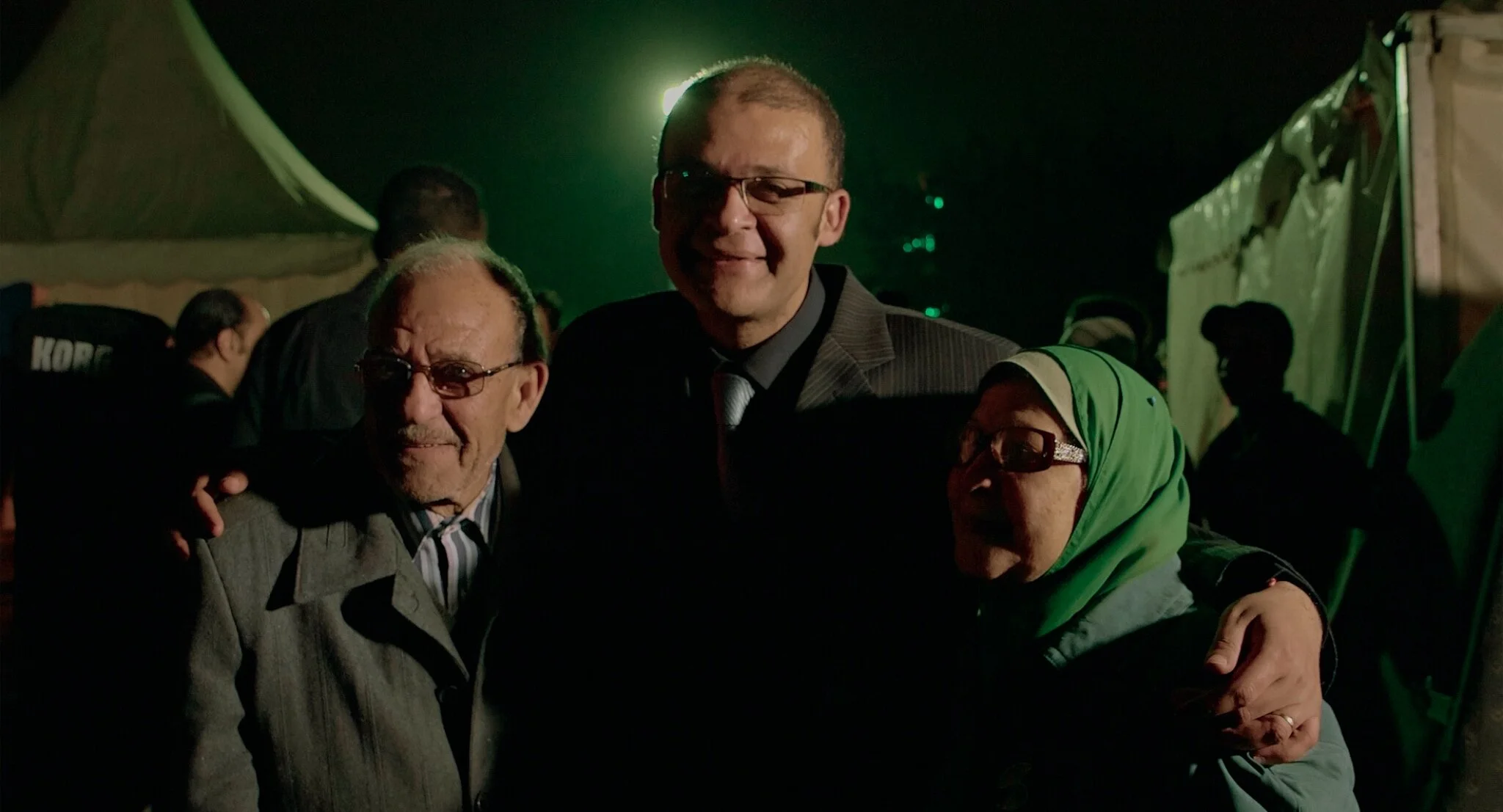
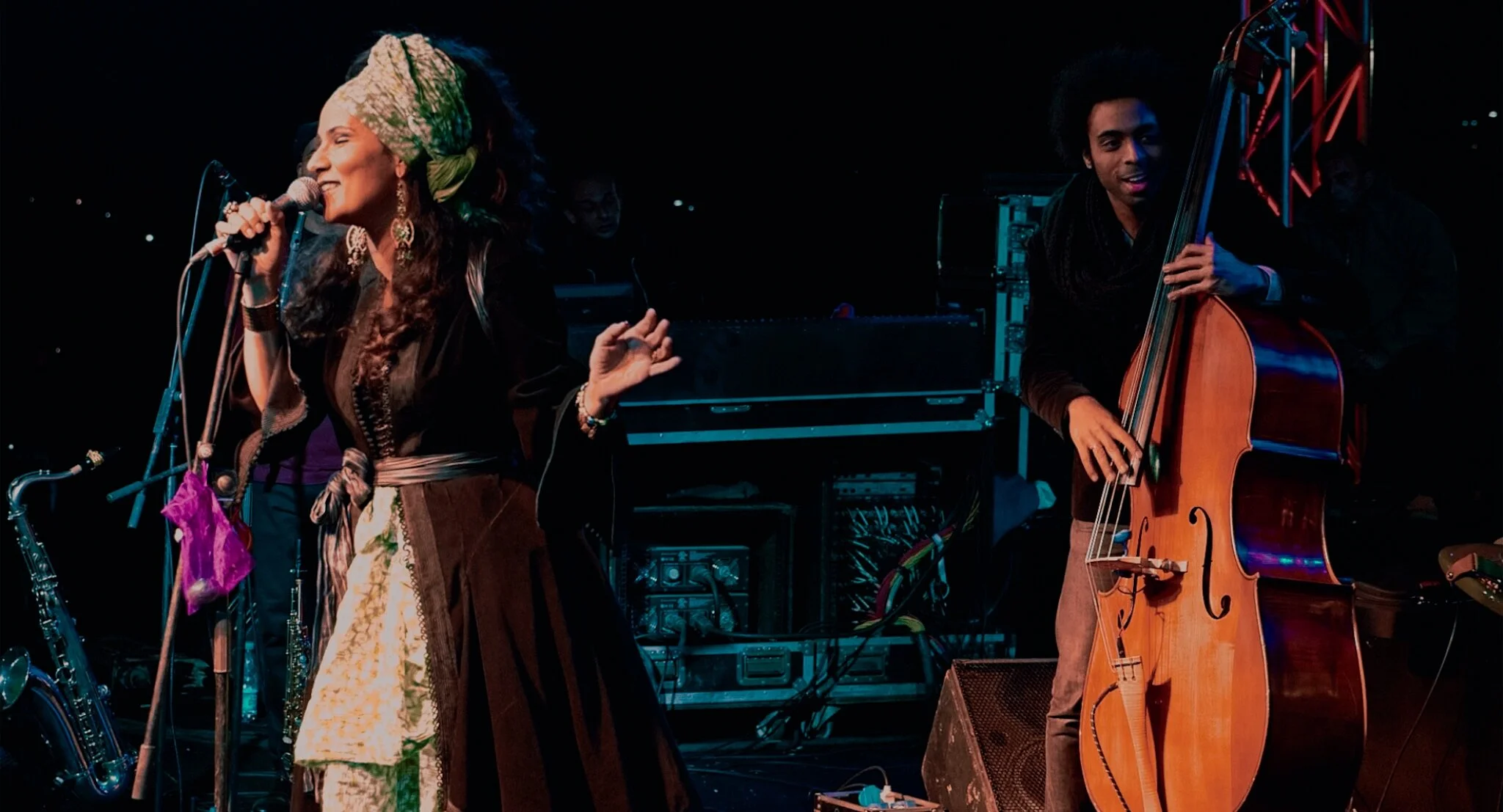
CAIRO JAZZMAN
Running time: 82 min
Genre: Music Documentary
Country/Year: Germany/2017
Format: DCP IOP 2K Flat Surround
With AMRO SALAH, MICHELLE ROUNDS, NABIL KHEMIR, KAZ OKUMURA TRIO, CARLOS BICA, CARSTEN DAERR,
OUM & BAND, ARABIAN KNIGHTZ, SOWETO KINCH, NASEER SHAMMA, ADAM LUKAS
Director ATEF BEN BOUZID
Producer ATEF BEN BOUZID, SEBASTIAN LEITNER
Cinematography FRANCESCA ARAIZA ANDRADE
Editing SEBASTIAN LEITNER
Sound JONAS PETERSEN
Music TIM HENDRIK HAASE, ADAM LUKAS
ICKEKREUZBERG, SLFILM
Territories: Norway, Sweden, denmark, finland, iceland
Format: DCP
THE SCAR PROJECT
Experimental Poetic Single Shot Documentary Film Project In Two Parts
available soon
THE END OF DUALITY -THE SCAR PROJECT
EXPERIMENTAL POETIC SINGLE SHOT DOCUMENTARY FILM PROJECT IN TWO PARTS ///
PART I: SCAR BERLIN, 78 MIN, 2009 /// PART II: SCAR GERMANY, 967 MIN, 2009-2014
PART I: NARBE BERLIN | SCAR BERLIN is a film dealing with the former division of the city of Berlin into East Berlin, the capital of the GDR, and West Berlin, a symbol for Western freedom of thought and movement. The Berlin Wall was carved into the landscape in 1961 and fell in a peaceful revolution in 1989. More than twenty years after the eradication of the German divide, The Scar features the total length of the approximately 160 km-long former Death-Strip isolating West Berlin within the East German State: this heavily guarded zone, between 70 and 500 meters wide, running the length of the Wall, reinforced the "antifascist protection bulwark". Filmmaker and visual artist Burkhard von Harder has enlisted the aid of a helicopter and pilot to follow the precise course of the former dividing line. Starting and ending at Schönefeld airport, this real time film document shows the "Scar" still in the process of healing. The attempt to find the "path" is akin to the attempt to recall permanently the past as part of the struggle of contemporary German society to comprehend its history. The land itself carries invisible traces of what has been written on the ground. It is the retracing of the trace that is the intent of this film. By doing so, Burkhard von Harder seeks to create a meditation on the past and perform an act of cinematic healing.
PART II: NARBE DEUTSCHLAND | SCAR GERMANY. As part of the Iron Curtain that ran from the Black Sea to Finland with an overall length of approx. 8500 km, the inner german border was splitting the country itself. The camera is following this line as close as possible, sometimes getting lost. The aim is to produce one single uninterrupted movement - in its entire length the film may have as few as 50 cuts (alone due to the need of refueling the helicopter). Slowly the camera follows the line below through the four seasons in the course of more than three years: what appeared to be a line proofs to be a cycle that morphs into a spiral, indicating change. Slow film - slow music: Important to the integrity of the work is its mesmerizing soundtrack, matching 16 hours of constant image flow with 16 hours of drone music, composed and performed by the late Klaus Wiese (1942-2009). A brief historic voice recording by Otto von Bismarck is referencing the time span of a 100 years (1889-1989), setting the tone, other than that the installation is envisioned as empty canvas the viewer is invited to fill him/herself.
TERRITORIES/AVailable in: NORWAY, SWEDEN, DENMARK, FINLAND, ICELAND
“DIE NARBE is a fascinating film, showing the former demarcation line in real time […]. The film’s underlying soundtrack is adding to the drive. Percussionist FM EINHEIT, former member of Einstuerzende Neubauten, built soundscapes while incorporating some compositions by soundpioneer Klaus Wiese.
[…] the wall not only remains visible physically – as relict and memorial to an inhuman division. It survived in the mind of the filmmaker, who stands in for many others who internalized this divide.
[…] von Harder turns it into a journey into the past, inspiring questions that lead beyond – since he made the decision not to explain, giving priority to visual immersion.” Realeyt.tv/Lotterliebe
“Strong work - congratulations!” Ai Weiwei
”This movie is completely like poetry.” Li Xianting, Chinese Contemporary Art Critic and organizer of the Beijing Independent Film Festival
”An unbelievable project for peace got off the ground.” Irms Duschl, Artist
”Breathtaking!” Andrew Robb, Minister of Trade and Investment, Australia
”A film for the 22nd century” Chinese Buddhist Visitor
DURCHGEKNALLT (Tullerusk)
coming soon / BALD
Eine absurde Komödie von jungen Filmemachern aus Nordnorwegen, entstanden als demokratisches Dugnad*-projekt.
* Dugnad bezeichnet im Norwegischen einen unbezahlten, freiwilligen und gemeinschaftlich ausgeführten Arbeitseinsatz zum Wohle der Gesellschaft oder einer Einzelperson. Ein Dugnad wird meist im örtlichen Zusammenhang (oft im Rahmen einer Nachbarschaftshilfe), seltener auch regional oder national, geplant und durchgeführt. Der Begriff selbst gilt im Land als typisch norwegisch. 2004 wurde das Wort Dugnad zum norwegischen Nationalwort gekürt, zu dessen Wahl das norwegische Radio NRK im Rahmen der Rundfunkserie Typisk norsk aufgerufen hatte. Dugnad gewann knapp vor “jah” (Laut beim Einatmen), “matpakke” (Lunchpaket, Pausenbrote), “hæ” und “koselig” (gemütlich, nett). Wikipedia
Synopsis
Der Zeitungsausträger Kurt wird sich umbringen... Warum? Nach einer Verabredung zum gamen mit seinem Kumpel, kommt Kurt nach Hause und erwischt seine Freundin auf dem Sofa mit jemand anderem. SIe redet ihm ein, dass er sich das alles eingebildet hat und schickt ihm zum Psychologen. Dananch geht alles den Bach runter and Kurts Entscheidung sich ein Waffe zu besorgen wird mehr und mehr nachvollziehbar…
filmimpro / tullerusk
FilmImpro ist ein Gruppe von jungen Filmbegeisterten, die ehrenamtlich zusammenarbeiten und Filme machen. Alles wird hier basisdemokratisch entschieden und jede/r hat die Möglichkeit an allen Entscheidungen teilzunehmen.
2011 begannen die Arbeiten am absurden und tragigkomischen Spielfilm DURCHGEKNALLT - TULLERUSK. Das Drehbuch wurde während Drehbuchbesprechungen mit jeweils fünf bis zehn verschiedenen jungen "Schriftstellern" erarbeitet. In einem demokratischen Prozess, an dem 20 Leute teilnahmen, wurden abgestimmt zu allen Details, die in das Drehbuch aufgenommen werden sollten. Viele Köche, viel Chaos! Es war dann die Aufgabe der Regisseure, dies alles in einem Spielfilm zusammen- und unterzubringen. Mit harter Arbeit und viel Ausdauer schritt die Filmproduktion langsam aber sicher voran. Im Sommer 2011 war das meiste gedreht, danach wurden sporadisch Retakes gemacht, während der Schnitt nach und nach Gestalt annahm. Es braucht Zeit, um einen Film zu machen, wenn die Beteiligten nicht rund um die Uhr verfügbar sind, wenn alles demokratisch entscheiden wird und wenn man ein kaum erwähnenswertes Budget zur Verfügung hat, aber 2020 war es dann soweit und der Film fertig. Insgesamt waren ungefähr hundert meist junge Leute an diesem Filmprojekt beteiligt. Trotz des geringen Budgets war es das Ziel, einen Film in professioneller „Verpackung“ zu machen. Das Ergebnis ist ein völlig alberner, „bad taste“ Film, der von allem losgelöst ist, was man als Hollywood-Narratologie oder guten Geschmack bezeichnen kann.
REVIEWS/PRESS
TULLERUSK is a rather unique experience. It is necessary to speak of “experience”, because we are certainly not dealing with a simple film. The upheaval of cinematic archetypes and the revolutionary use of writing techniques make this work a kind of free fall, in which we have plenty of time to reflect, interpret the metaphors and, above all, have fun. In its surreal gait, the story of TULLERUSK reveals in fact a profound connection with contemporary reality. By breaking down any narrative and aesthetic canon, the authors of this crazy film have stripped themselves of the preconceptions and rigid “discipline” of cinematographic construction, opening up to the vastness of all possible inspirations, coming from every area of human experience. And so, by osmosis, TULLERUSK has absorbed the linguistic codes, stylistic features and opportunities of an entire generation. If it is perhaps impossible to represent reality, the directors, Håvard Walseth and Espen Olaisen have understood, with irony and sagacity, the expressive power of chaos and ambiguity. The result is therefore a film-manifesto, which rejects clichés, scoffs at reality (often breaking even the fourth wall), in a constant attempt to represent it in every crazy, twisted aspect.
What amazes and makes the film even more enjoyable is the technical mastery with which the film was built. You know, to be fun, something must be credible. The directors know this too. In fact, with a great sense of taste and staging, they build a real style, colorful and “dirty”, capable of accompanying the protagonists on their journey towards entropy. It is rare to see such skill put at the service of self-irony and this can only leave us happily surprised. TULLERUSK is a unique film and must be seen, to understand a little better maybe everything, maybe nothing. And however it goes, it was incredible. Prisma, Rome, Independent Film Awards

